Archived Fire Damage Blog Posts
Preventing a Lightning Fire From Burning Through Your Beacon Property | SERVPRO® of Western Dutchess County
10/4/2022 (Permalink)
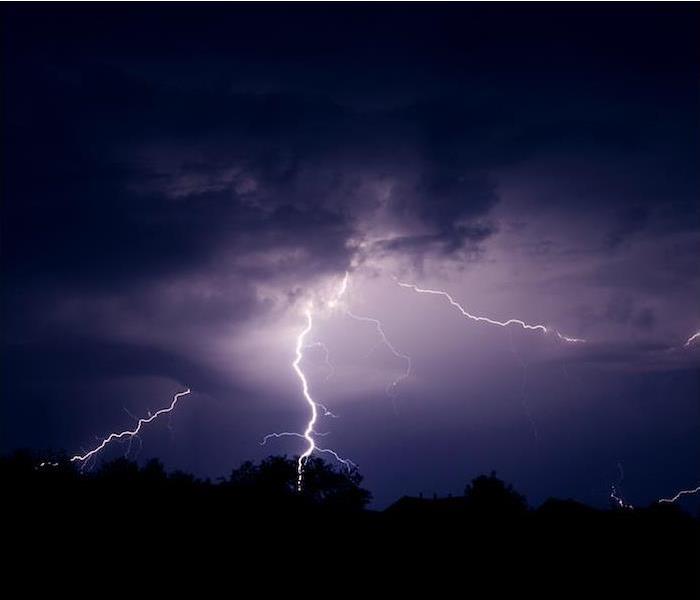 If you are dealing with smoke or fire damage, call SERVPRO of Western Dutchess for efficient, effective and complete fire damage services.
If you are dealing with smoke or fire damage, call SERVPRO of Western Dutchess for efficient, effective and complete fire damage services.
With the right safety equipment and property planning, many causes of home fires can be avoided or reduced. However, fires can also begin externally, creating additional risks that you must prepare for at your Beacon home.
More than 70,000 damage claims due to lightning were made in 2020, and while lightning strikes may seem rare, the risks are apparent. Lightning can cause a fire by burning items in your home, debris outdoors or even by frying your electrical system.
Lightning strikes around 6,000 times every minute, so it’s important to prepare ourselves and our homes because no one is completely safe from this risk.
What Is Lightning?Lightning is a high concentration of electrical current that connects the clouds in the sky to the ground. Lightning is usually associated with thunderstorms, but it can also occur during wildfires, winter storms and in dry conditions, a phenomenon known as “dry lightning.”
This is why we can’t assume that lightning only happens during severe storms because dry lightning exists, too. This disaster can easily spark wildfires, and while the risks change with the seasons, it’s important for us to be prepared for lightning damage at all times.
Protecting Your Home From Lightning FiresLightning can cause damage in multiple ways, including sparking flames from the heat of the strike or from surging through your appliances and wiring. While a lightning-related fire may not be immediately noticeable, you should look out for signs that the house has been struck, like a loud boom, black marks or the smell of smoke.
The loud noise of the strike, followed by black marks or a smoky smell, is your sign that you should call the fire department immediately. After you’ve been cleared, have an electrician test your electrical system to be extra safe.
You can prevent a house fire from lightning by installing a lightning rod that will divert the energy from a strike and ward off electrical surges. You can also add a whole-home surge protector to prevent wire failure or malfunction from causing flames to ignite.
When Lightning Strikes NearbyLightning is a frequent cause of wildfires, but different areas face different peak seasons for these kinds of fires. On average, around 9,000 fires originate through lightning, and these flames are often more dangerous due to the high heat impact of the strike.
The good news is that you can protect your house. Clear your property of dead vegetation, and think about installing a defensible zone around your home to prevent fire from spreading onto the structure.
It’s also crucial that you have full protection from smoke alarms inside the house so you can be alerted no matter where the fire originates.
If a fire affects your home, call SERVPRO of Western Dutchess County for any cleanup and restoration needs. Our experts are trained to handle every kind of fire damage, and we offer 24⁄7 availability so that you can get assistance when you need it most.
Have you experienced smoke or fire damage in your home? Call us today to get restoration services started.
Don’t Allow Your Poughkeepsie Backyard Fire to Become a Disaster | SERVPRO® of Western Dutchess County
8/10/2022 (Permalink)
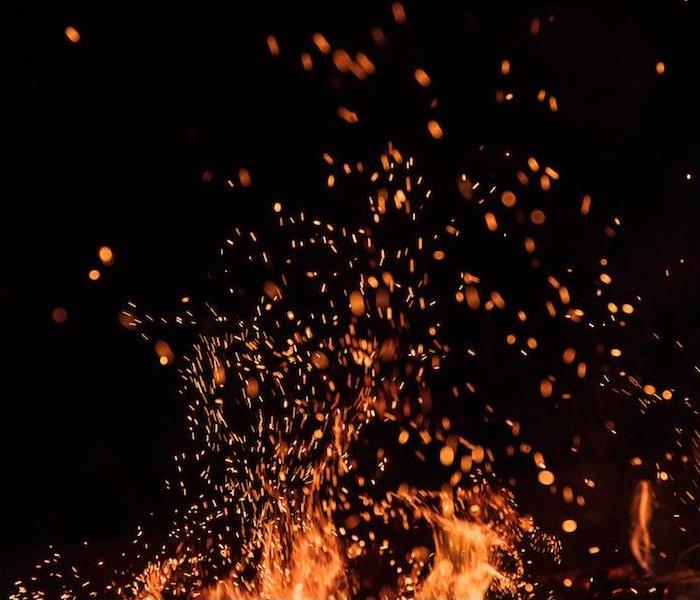 Fire Prevention outside is just as important as inside your Poughkeepsie home!
Fire Prevention outside is just as important as inside your Poughkeepsie home!
Everyone loves the atmosphere around a fire. Sitting at your Poughkeepsie home with your family roasting marshmallows or telling stories all night long is a great way to enjoy your property.
Fire is used in a variety of ways, such as cooking food, controlling bugs and removing dead plant debris, but every fire carries inherent risks. The National Park Service states that humans cause nearly 85% of wildfires.
In New York, we face a medium risk of wildfires. Although we don’t have crazy wildfires like some states, 95% of New York wildfires are caused by humans. This tells us that we face just as much risk as anywhere else because our actions are causing the fires.
However, this does not mean that you should avoid burning leaves or having a campfire with the family. If you follow the proper safety procedures and treat every fire with a high level of caution, you can enjoy the benefits of a contained fire while reducing the risk of disaster.
Recreational Fire HazardsFires of all kinds carry natural risks, but it’s been seen that campfires, grilling and fireworks are among the most frequent causes of outdoor fires. Approximately 8,800 home fires begin from the use of grills annually, so it’s important to double-check every part of yours before walking away from it.
When putting together a campfire, it’s key to select a spot at least 30 feet from any structure or vehicle. Beyond this, stick to using wood for fuel, as adding other flammable material could increase the chance of your fire spreading out of control.
Many homes have added fire pits to their backyard, as it gives a campsite feel while still on your own property. These pits carry similar risks to other kinds of fire, though, so make sure that you follow the same precautions that you would with any flame.
Additionally, a lot of people choose to get rid of household or construction debris with a fire, but this is dangerous to both your home and your health. Only burn approved firewood to reduce your risk of starting the next natural disaster.
In New York, fireworks legislation is generally left up to the county governments to decide. In Dutchess County, the government has approved the sale of small fireworks like bottle rockets and sparklers for civilian use. However, if you want to see some real explosions, you’ll have to attend an official firework show that is permitted by our local ordinances.
Other Outdoor Fire HazardsGiven the risks that fires can have, they still serve a purpose in our daily lives. Areas like ours that see high levels of dead debris in the fall and winter may need to use fires to prevent the buildup of leaves.
Outdoor burning is legal in the state of New York, but there was a mandatory burn ban from March 16 through May 14 to help prevent wildfire disasters. Even though our burn ban period is relatively short, you should always use extreme caution when burning a large area fire.
Making sure your property is clear of excess debris can significantly increase your protection against wildfires. Additionally, you can use landscaping techniques that will help prevent a wildfire from spreading to your home. Most importantly, knowing what to burn and adhering to fire safety guidelines can help you reduce the risk of suffering damage.
Using accelerants like gasoline can cause a fire to expand rapidly and get out of hand faster than you can react. You should never resort to adding gas to fire, and always make sure the gasoline is stored properly in certified containers.
Before you decide to light that nighttime fire, check our local weather updates for any signs that a fire could be a bad idea. High winds and a lack of rain can create the perfect chance for a campfire to become a regional disaster.
If you are unfortunate enough to experience fire damage, don’t hesitate to call SERVPRO of Western Dutchess County. We have an expert team with training in every part of fire damage restoration, and it’s always our goal to have you back in your restored home as soon as possible.
Burn safely outdoors. And save some chocolate for us! If you have experienced fire or smoke damage, contact us today to get restoration started faster.
Fire Safety Checklist for Your New Home in Beacon!
7/14/2022 (Permalink)
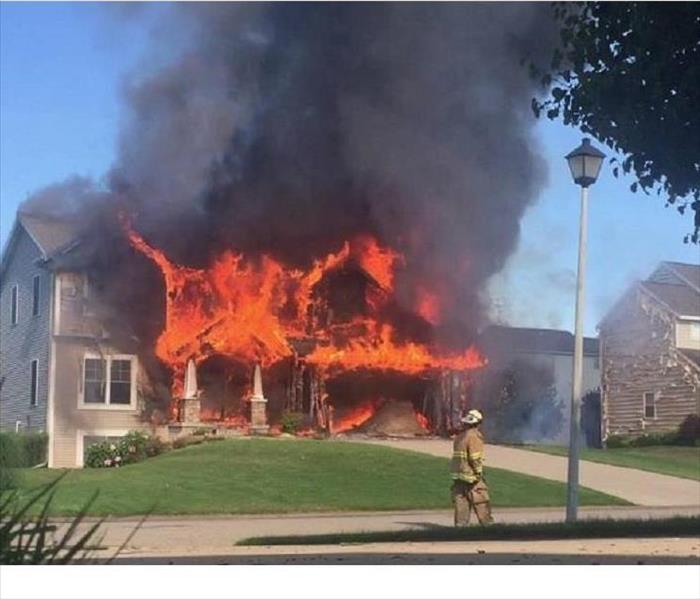 Make sure to check key areas of your new home for fire safety and prevention!
Make sure to check key areas of your new home for fire safety and prevention!
Moving into a new house or an apartment in the Hudson Valley, there are many things to think about throughout the process. While a home inspection can give you important knowledge regarding general maintenance and structural soundness, once the place officially becomes yours, it is important to do your own inspection to evaluate the fire safety of the home. Many new homeowners in the Hudson Valley have lived in apartment or condo style homes before, so there could be some elements in your new place that you might not have considered previously.
Depending on the history of the property, you may need to make improvements before moving in so you can be certain that you will be fire-safe from the moment you unlock your new front door. Here are some key things to check for:
Doing a Fire Safety Inspection for Your New Home
Check the Smoke Detectors
The first thing you will want to check is the smoke detectors in the home, as over half of deaths. You will not only want to use the smoke detectors’ “test” feature to make sure they are functional, but you will also want to make sure that enough alarms have been installed throughout the home to keep everyone safe regardless of what room they are in. You should have a smoke detector on every floor, in every sleeping area and near the kitchen at a minimum.
Look Around for Fire Extinguishers
Fire extinguishers are something that usually gets sold with the house, but it is important to still check them if the previous owners left them behind. While fire extinguishers do not come with a hard expiration date, they do not last forever. You can easily check them by checking the
gauge—if the needle is in the green part of the gauge, the extinguisher should still be functional. You should also make sure you have the right type of fire extinguisher; while many household models are multipurpose, some are only rated to put out certain types of fires.
Check and Empty the Dryer Vent
Though you are probably in the habit of clearing out your dryer’s lint trap every time you transfer in a load of laundry, inspecting the external vent is also something that should be done when you move in as lint is highly flammable. You can do this by pulling your dryer away from the wall and checking the vent that goes to the outside in order to prevent any debris or clothes lint from catching fire suddenly.
Have the Air Ducts Cleaned
If you have a central heat and air conditioning unit in the home, a good rule of thumb for better indoor air quality is to have the duct work inspected and cleaned. Over time, the unit collects debris, dust, pollen, dander and pollutants. While this is normal, the ducts get overloaded and can’t clean the air as needed and your system will work harder to maintain the environment.
Moving into a new home is exciting and can bring years of wonderful memories. Should you ever experience fire or water damage, count on SERVPRO of Western Dutchess County to be there with an emergency response 24 hours a day!
Clever Ideas to Help You Prevent Home Fires | SERVPRO® of Western Dutchess County
6/23/2022 (Permalink)
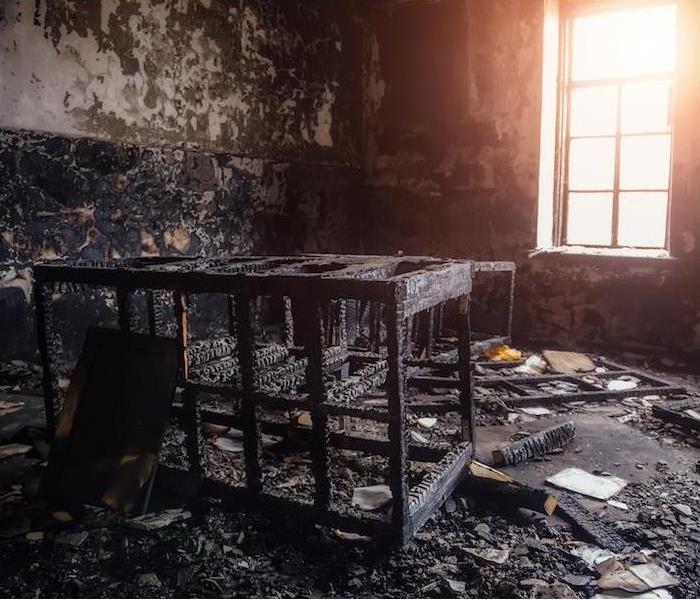 Creative fire prevention ideas for your Dutchess County home!
Creative fire prevention ideas for your Dutchess County home!
Even though the summer storm season is around the corner, house fires are still a huge concern for everyone in the country. It’s astounding that so far in 2022 the American Red Cross has assisted at over 20,000 house fires, which is only a small portion of the total number.
It’s always a smart idea to check your smoke detectors regularly, as they continue to be the best way to prevent any loss of life or extensive damage. Ensuring that you have complete coverage begins with a smoke detector in every bedroom, every floor and in places like the kitchen where appliances that generate heat exist.
Along with having the right equipment, there are many simple tasks you can complete that will also help lower your risk of suffering a house fire.
Cleaning Your Hazardous AppliancesIn the Hudson Valley, we are proud to have many historic and legendary buildings all throughout our region. However, these buildings are likely outfitted with appliances and machines that are older than most.
Ancient appliances are more likely to malfunction and result in a fire because of their extended use and lack of safety mechanisms to prevent accidental disasters. Cleaning them regularly and checking them for any damage is the best way to prevent destruction.
Along with cleaning these appliances frequently, reducing the clutter in your home can allow proper airflows through it, reducing the chance that anything overheats and ignites.
Overloaded extension cords are another frequent cause of fires inside the home. When too many devices are plugged in, these devices are unable to handle the electricity and can burst into flames themselves.
Additionally, you should leave plenty of space between furniture and wall outlets to allow for proper air flow and prevent overheating.
Create a Defensible Space in Your YardWhen a fire begins outside and spreads toward your home, the surrounding land that constitutes your yard is the last thing preventing the flames from coming in. In recent years, landscaping techniques designed to prevent fires have become increasingly popular.
These strategies help protect your home from succumbing to a fire, and they allow emergency service workers to do their jobs with ample space. They have been so successful at preventing fires, that states are beginning to enforce defensible zone requirements for yards.
Requirements like these won’t stop you from planting your annual garden or refreshing your floral arrangement—instead, they focus on placing your plants in strategic locations that limit the amount of fuel fires have to burn. It’s also smart to remove any dead plants or leaves, as these are extra flammable and will keep fires going.
Keep It Clean & Keep It SafeIn addition to maintaining your appliances and yard, setting a good spring-cleaning routine can help you limit fire hazards. Set a block of time, roughly a week, that you will spend a bit of time each day working on it. This will help lighten the load and accomplish it piece by piece.
However, taking steps toward fire prevention doesn’t have to be a complex regimen. Easy jobs like dusting regularly can help reduce the risk of a fire. Focus heavily on dust near any appliance or outlet, as these are likely spots for dust fires to begin.
If you have experienced fire damage or want to learn more about our fire damage restoration services, contact us today. We’re here to act fast, 24⁄7.
Fire Safety Tips for Cozy Dutchess County Winters
12/7/2021 (Permalink)
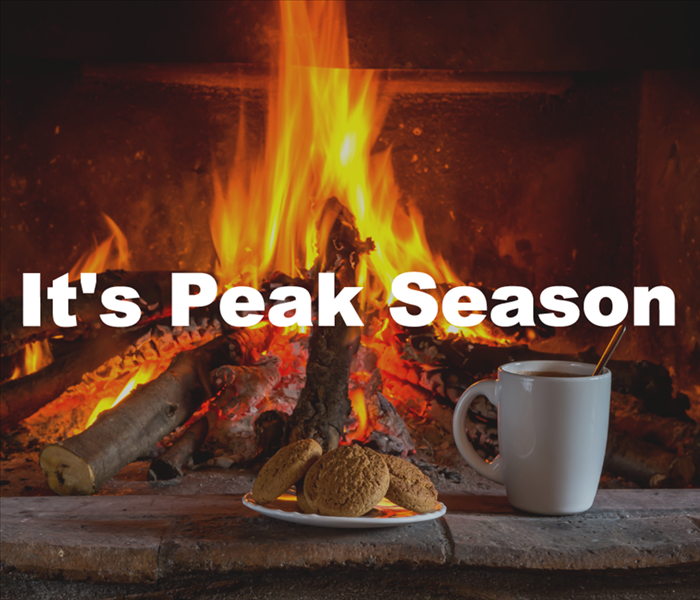 The winter months are when we handle the most fire damage restorations at homes and businesses. Always be in the know of winter fire safety tips!
The winter months are when we handle the most fire damage restorations at homes and businesses. Always be in the know of winter fire safety tips!
As we march on to the holidays in Poughkeepsie, Fishkill, Wappingers, Beacon and Hopewell and we begin preparing our homes and our outdoor spaces for winter, it’s important that you give some thought to fire safety efforts to complement the season. Many fire safety tips will be the same as the ones you should be aware of throughout the year, but as the weather gets colder, there are other elements to consider.
An eye-opening fact is that property fires happen more when the weather turns cooler, often due to the use of heating appliances, more candle use, fireplace and chimney issues, extra cooking during the holidays and home décor becoming a fire hazard.
~Here are some key tips to help you and all family members stay safe from these risks.
Stay Safe with Space Heaters
When it turns chilly, many of us will reach for the space heaters before turning our central system on. While space heaters can be used safely, they are a leading cause of household fires because of how often they are used improperly. Be sure to keep a three-foot buffer around heaters that is free of flammable objects, and always unplug them if you are not in the room. Do NOT use an extension cord or power strip, plug it directly into the wall.
Practice Good Candle Habits
Candles make homes feel cozy, smell great and really help give a holiday feel, but they can also be incredibly dangerous. As warm and inviting as candles are, they do still contain an open flame—meaning they do present a level of risk. It is best to never leave candles unattended when lit and to extinguish them before leaving the room. Also be certain that there are no flammable items near a candle that could potentially catch fire if the flame burns too high. Holiday décor or any home décor can be a fire hazard if placed too close to a candle.
Keep Your Fireplace Functional
If you have a fireplace, make sure you get it inspected before ever lighting a fire in it. There are many issues that can develop with chimneys that can cause smoke or fire hazards inside the home. Always use a fireplace grate to avoid any accidents and never leave a fire burning unattended. Make sure it’s extinguished properly before going to bed and put any ashes in a metal container with a lid that can be stored outside, at least 3 feet away from your home.
If you’re using a wood stove, have your chimney inspected and cleaned each year by a professional. · Keep anything that can burn at least 3 feet from the stove. · Do not burn paper in your wood stove. · Before you go to sleep or leave your home, put the fire out completely.
If you have had fire damage in your home or business, we are here to help! Call us 24/7 and our certified fire damage restoration technicians will start the damage remediation process right away.
Contact us at any time, we’ll help make it "Like it never even happened."
A Look at the Leading Causes of House Fires|SERVPRO of Western Dutchess County
11/5/2021 (Permalink)
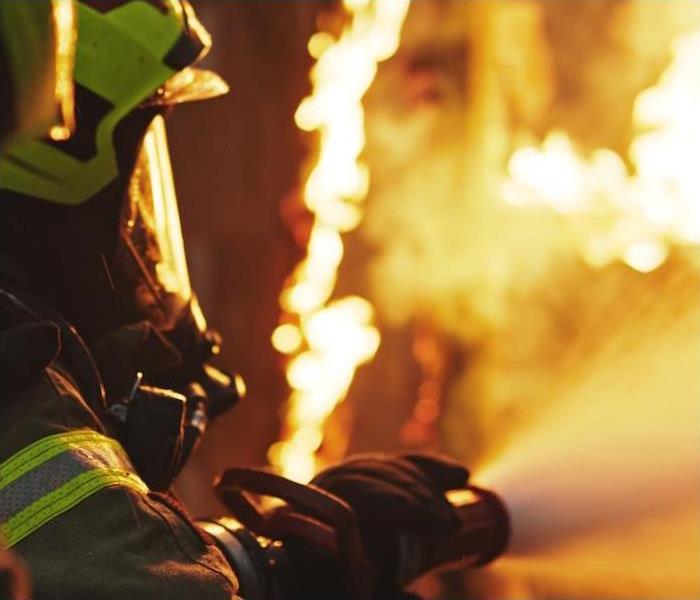 You can count on SERVPRO of Western Dutchess County if you ever suffer fire damage at your home,
You can count on SERVPRO of Western Dutchess County if you ever suffer fire damage at your home,
To see something as valuable as your home up in flames is devastating! House fires can happen without warning and take over your home and personal items in a matter of minutes.
Even with all of the awareness campaigns about fire safety over the last few decades, more than a quarter of all reported fires still occur in homes.
By knowing the top causes of house fires, we can help get these numbers down. Read on to get a look at those causes and how to prevent them.
Cooking. The majority of house fires begin in the kitchen. The No. 1 cause is unattended cooking. When you’re using the stove, oven or grill, be sure you’re physically and mentally present at all times.
Heating equipment. Because of a combination of things like mishaps or equipment malfunctions, 14% of house fires are started because of heating equipment. Portable space heaters can be particularly dangerous. If you use a space heater, be sure it is placed away from flammable objects and on a level surface.
Electrical fires. These days, electricity plays an essential role in our daily lives, and you will find it in basically every room of the house. Simple carelessness can increase your fire risk, so ensure you aren’t using frayed cords or wires and that you take care not to overload outlets. If you live in an older house, have your electrical system inspected regularly, since older systems weren’t built to withstand the amount of energy being used today.
Intentional fires. There are more than 28,000 intentional home fires started every year. We don’t mean a fire that got out of hand accidentally. No, we mean someone purposefully set a home structure on fire with the intent of destruction.
Smoking materials. Cigarettes and other smoking materials may cause only 5% of house fires, but they are the leading cause of fire death. People often fall asleep with these things still burning in their home.
Regardless of the cause, SERVPRO is here for you if your home is affected by fire. Contact SERVPRO of Western Dutchess County, let us help make it "Like it never even happened."
Fall, Fires & Safety | SERVPRO® of Western Dutchess County
10/11/2021 (Permalink)
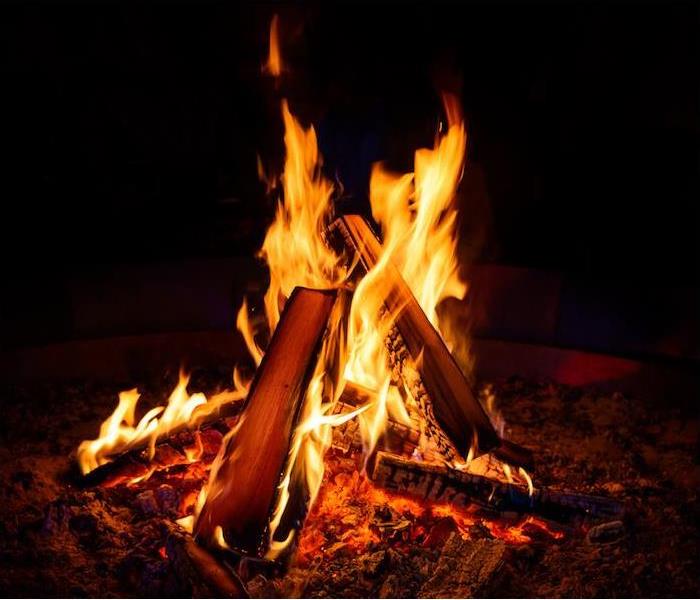 Be mindful about fall fire safety. Always remember that SERVPRO of Western Dutchess County is the trusted leader in the fire restoration industry.
Be mindful about fall fire safety. Always remember that SERVPRO of Western Dutchess County is the trusted leader in the fire restoration industry.
Are you ready for the arrival of fall in the Hudson Valley? Instead of steamy, hot weather, we are now getting to enjoy chillier evenings and less humidity.
But like everything in life, fall comes with risks. The season tends to bring more fire hazards than you see during the summer and spring months. Let’s be proactive and look ahead at the safety tips you can use during the fall season.
Campfire Safety
An important thing about building a campfire is to know where to build it, how to build it and how to put it out when you are finished. The best thing you can do is build your campfire away from anything flammable, including low-hanging limbs.
As you are building the fire, it’s important to ignite the fire with a match and not an accelerant like kerosene or lighter fluid.
Anytime you want to keep the fire going, you can add larger, dry wood. And when you are ready to put the fire out, slowly douse it with a bucket of water. Ensure that you get all embers, so that when you leave, nothing can cause it to start again.
Space Heaters
By using a portable space heater, you can heat a small area in a short amount of time. But it’s important to recognize that while these small heaters are convenient, they are also one of the common causes of house fires in the fall and winter.
When using a space heater, there are some simple tips you can use in order to protect your home. Be sure to keep it on a level surface and away from heavy traffic areas.
While most of these space heaters now come with an automatic shut-off switch, you certainly don’t want to take any chances.
Halloween
When you think of Halloween, you picture pumpkins with candles, spooky porch décor or even the strobe lights to present a “haunted” home. Regardless of what decorations you choose, it’s important to remember that these things present potential fire hazards. So as you enjoy your décor, stay attentive.
If a fire hazard should turn from potential to reality in your home, remember the trusted leader in the recovery industry and contact SERVPRO to get your property fully restored right down to the smell of smoke.
How Quickly Can A Fire Spread in Your Beacon House?
8/12/2021 (Permalink)
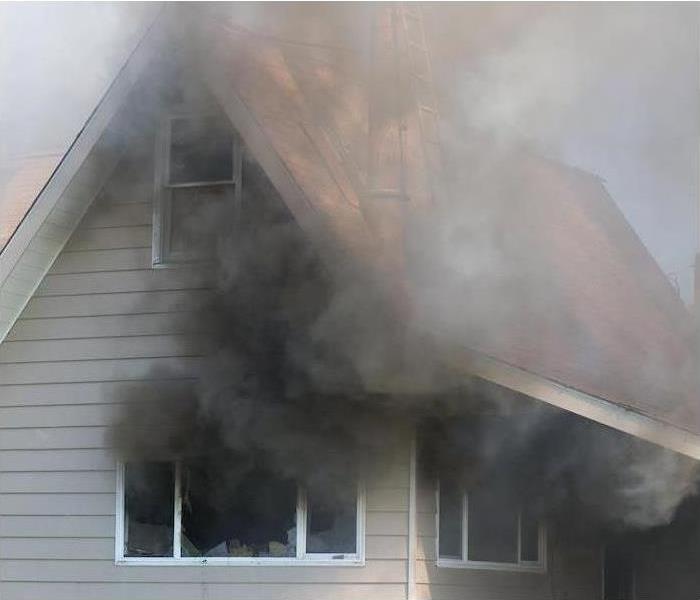 Have a reliable and efficient home fire escape plan in place that can be executed in under 3 minutes!
Have a reliable and efficient home fire escape plan in place that can be executed in under 3 minutes!
UNDER 3 MINUTES, make sure your family is prepared to evacuate quickly!
We all know that house fires are a super dangerous thing to encounter, but that can be difficult to grasp without knowing exactly what goes into the making of a house fire. To help provide some context for how house fires spread so rapidly and how important it is to be able to execute an efficient fire escape plan, we have put together a guide to what fire is, how it spreads and how quickly it can tear through your home.
What Is Fire?
To describe it easily, fire comes from a chemical reaction between air and a fuel source when it becomes hot enough to ignite. Once this occurs, the fire starts and releases decomposed material (in the form of smoke), char (a pure carbon substance) of whatever it burning and ash (which is all of the materials of the fuel source that are not able to burn). These are noxious and harmful to be around for any length of time, even small fires can do a lot of damage.
How Does Fire Spread?
All fire needs to sustain itself are heat, fuel and oxygen—also known as the fire triangle. The oxygen is a given and the fire is producing its own heat, so the flames will search for more fuel throughout the home. This is how a fire spreads so rapidly once the flames begin.
What Is the Typical Timeline of a House Fire?
The general rule of thumb is that you are supposed to be able to perform the whole escape plan in under three minutes, but have you ever wondered why? Fires spread remarkably fast, making a quick escape plan necessary. Here is a reliable timeline of a house fire:
0:00 to 0:30: The fire begins, and flames immediately start to grow.
0:30 to 1:00: Flames begin to spread through the room and smoke starts to build and pollute the air.
1:00 to 1:30: Smoke becomes thicker and the temperature starts to rise.
1:00 to 1:30: The fire alarm sounds, and everyone, including pets, need to evacuate immediately.
1:30 to 2:00: Smoke starts pouring into other rooms of the house.
2:00 to 2:30: The temperature in the area where the fire started will reach 500 degrees Fahrenheit.
3:00 to 4:00: Flames will continue to spread through the house and engulf the exterior walls.
Scary, right? When it’s broken down like this, it’s easier to understand what and why and how vital it is to move fast. The numbers really speak for themselves, so be ready with an evacuation plan, make sure your whole family has rehearsed it, revised it and rehearsed it again. We also recommend including your pets in this scenario to help things go smoother should an emergency arise.
If your home has been impacted by any kind of fire, we are here to help you 24/7. We’re here to help with restoration teams standing by no matter when you need us. SERVPRO of Western Dutchess County will help make it "Like it never even happened."
Checking Your New Home for Fire Safety Measures | SERVPRO® of Western Dutchess County
7/20/2021 (Permalink)
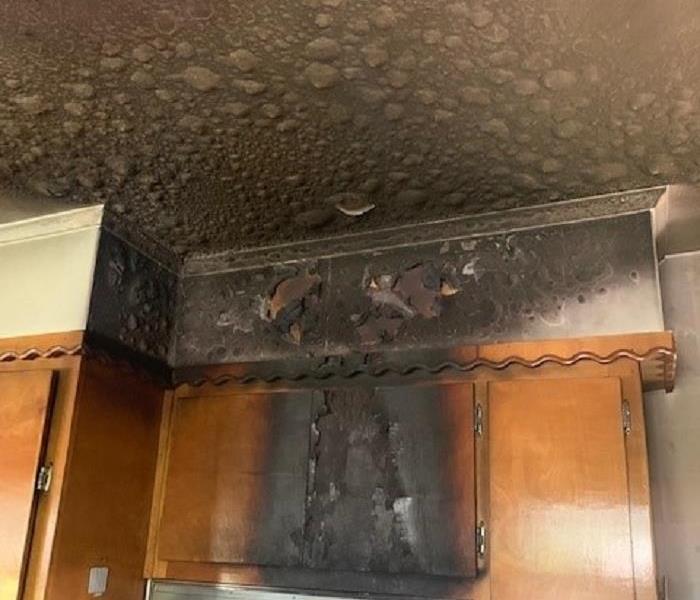 Fire safety is one of the first things you should check out when you move into a new home!
Fire safety is one of the first things you should check out when you move into a new home!
If you are moving into a new house or an apartment in Dutchess County, there are many things to think about throughout the process. While a home inspection can give you important knowledge regarding general maintenance and structural soundness, once the place officially becomes yours, it is important to do your own inspection to evaluate the fire safety of the home.
Depending on the history of the home, you may need to make improvements before your family moves in so you can be certain that you will be fire-safe from the moment you unlock your new front door. Here are some key things to check for:
Doing a Fire Safety Inspection for Your New Home
`Check the Smoke Detectors
The first thing you will want to check is the smoke detectors in the home, as over ?half of deaths resulting from home fires occur in homes with non-operational smoke alarms?. You will not only want to use the smoke detectors’ “test” feature to make sure they are functional, but you will also want to make sure that enough alarms have been installed throughout the home to keep everyone safe regardless of what room they are in. You should have a smoke detector on every floor, in every sleeping area and near the kitchen at a minimum. Make sure you’re clear on whether the smoke detector should also include a carbon monoxide detector as well. Most are sold as one unit that can detect either hazard.
`Look Around for Fire Extinguishers
Fire extinguishers are something that usually gets sold with the house, but it is important to still check them if the previous owners left them behind. While fire extinguishers do not come with a hard expiration date, they do not last forever. You can easily check them by ?inspecting the pressure gauge?—if the needle is in the green part of the gauge, the extinguisher should still be functional. You should also make sure you have the right type of fire extinguisher; while many household models are multipurpose, some are only rated to put out certain types of fires. The kitchen should have fresh extinguishers in place and rated to be used on grease and cooking fires as well as regular. Check the labels carefully when you purchase new ones. Garage areas should include ones that can be used for multipurposes.
Empty the Dryer Vent
Though you are probably in the habit of clearing out your dryer’s lint trap every time you transfer in a load of laundry, inspecting the external vent is also something that should be done when you move in as lint is highly flammable. You can do this by pulling your dryer away from the wall and checking the vent that goes to the outside in order to prevent any debris or clothes lint from catching fire suddenly. If it’s an older home or vent, sometimes birds and small animals can end up making their nests in the vents as well. Have your dryer vent professionally cleaned yearly to avoid issues.
If your home is damaged by any kind fire, we are here to help. ? Contact us 24/7? for a rapid response from our expert technicians. SERVPRO of Western Dutchess County, making it "Like it never even happened," locally since 1992.
Steps to the House Fire Recovery Process in Dutchess County
6/25/2021 (Permalink)
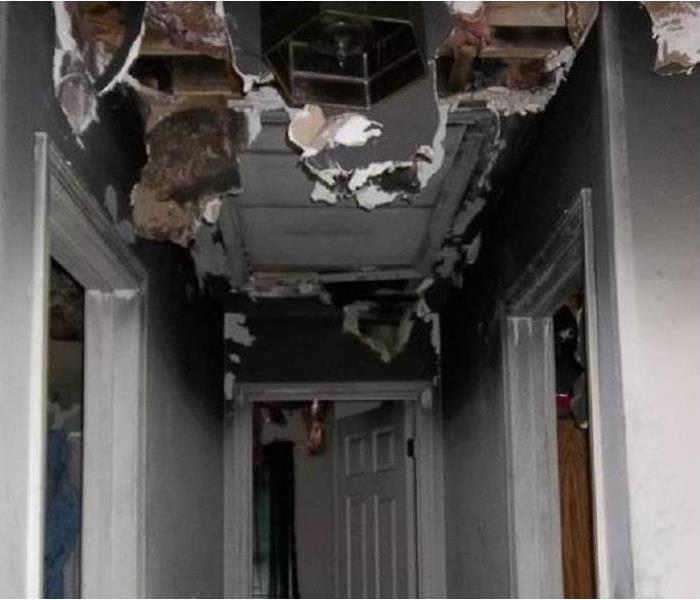 Use a trusted partner like SERVPRO of Western Dutchess County when dealing with a house fire, it can take a lot of burden off your shoulders.
Use a trusted partner like SERVPRO of Western Dutchess County when dealing with a house fire, it can take a lot of burden off your shoulders.
Being prepared in case of a house fire at your Poughkeepsie, Wappingers, Hopewell Junction or Fishkill home is an ideal way to keep yourself and your family safe just in case. Not only is it crucial to plan for the moment flames start, but it’s smart to have an action plan for the recovery process so you’ll know what to expect and feel less overwhelmed.
By being prepared ahead of time, you can significantly reduce your stress that can come with the aftermath of a house fire. While it’s hard to think on if you haven’t been through one before, having a plan truly helps in more ways than you think.
Have an Action Plan for the Fire Recovery Process-
Prepare yourself for what you might expect. You cannot know what your home will look like before you’re permitted to go inside, if at all, but understanding how fire causes damage can help prepare you for what to expect. Not only do flames cause charring on objects they encounter, but smoke and soot are airborne and can damage other parts of the home as well. Some areas could be more of a melted situation, some might have extended into the ceilings or walls. Soft goods like couches, bedding or carpeting might be black and frayed.
Not all, but most fires are put out with water, and a lot of it. Water damage on top of the scorched areas could be alarming to see as well. Dripping from the ceiling, squishy areas or piles of debris, pools or standing water could well be the case. If fire extinguishers were used instead, there will be a chalky, white dust on everything that will be quite difficult to remove by yourself.
No two fires are the same and all materials burn or char differently, be prepared as best as possible that what you’re looking at might not be easy to mentally digest and perhaps some extra time and care should be taken before entering the home or property.
Wait to enter your home. Safety is the top recommendation in the aftermath of a fire. You should never go back into your home before officials deem it safe, as they will need to assess the damage and potentially stabilize the structure to lessen the risk of injury for you and your household. There will be times, depending on the severity of the situation, that you won’t be allowed back inside. If there are items that are detrimental to your daily living, the fire chief or building inspector might be able to help arrange another way to retrieve an item or two by an experienced professional.
Contact your insurance company. Filing an insurance claim as quickly as possible is always recommended so you can start receiving the help you needed immediately. Many insurance carriers have emergency services that can include hotel rooms, food and clothing allowances and other needed tools to get resources coming your way. Keep in mind that every insurance company varies and that means every homeowner’s policy is different. Contacting your insurance company early on is recommended so you know the steps that need to be made and the necessities coming to help.
Document the damages. Staying organized is key to making sure nothing falls through the cracks, especially when it comes to keeping track of your belongings. Take photos of each room, closet, cabinet and drawer and try to create a detailed inventory list so you know exactly what has been impacted by a fire, and be sure to take plenty of photos in case your insurance agent requests them for your claim. Some fire restoration companies, like SERVPRO of Western Dutchess County, have a contents division that specialize in removing, cleaning, restoring, inventorying, packing and storing your personal belongings
Contact your LOCAL restoration company. The stress and emotional trauma that can linger after a house fire is something to take very seriously, and can be long-lasting. Working with a local, seasoned, experienced fire restoration company you can put your faith into will help you during this delicate process, because you will know your home is in qualified, professional hands. Let us handle the work and get you back home and feeling "Like it never even happened."
If your home is damaged in a fire, you can count on us to help. We’re here to help every step of the way, 24/7 and locally owned and operated since 1992.
Focusing on Electrical Fire Hazards in Fishkill Homes
2/9/2021 (Permalink)
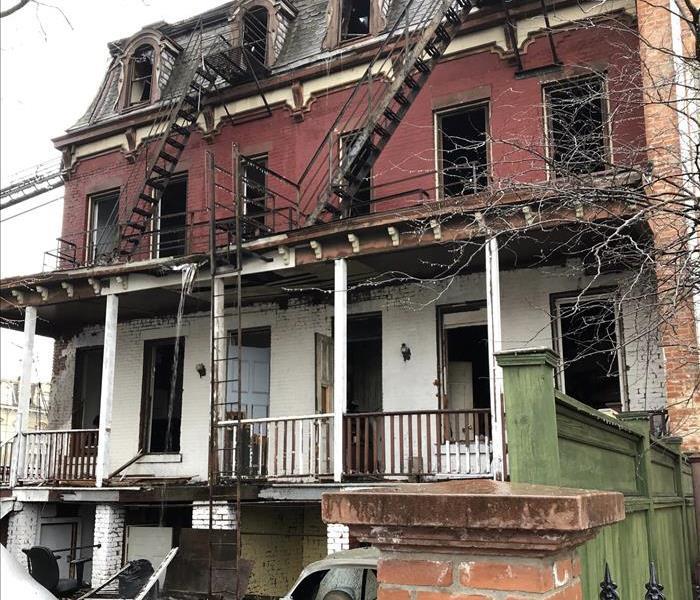 Knowing and preventing electrical fire hazards can be lifesaving information!
Knowing and preventing electrical fire hazards can be lifesaving information!
During Burn Awareness Week, Feb. 7-13, 2021, the American Burn Association has put out informative tips hat can help avoid electrical fires in your Dutchess a county home or business.
Share this helpful and potentially life-saving information with your family and colleagues!
-Never plug major appliances into extension cords or power strips, plug them directly into an outlet.
-Always check cords for frayed or bare wires, cracks and loose connections. A lot of times these wires can be under furniture or carpeting. Never use them if they’re frayed.
-Extension cords are rated for their specific use, don’t use an indoor extension cord outdoors and vice versa.
-If you have a generator, have an electrician install a transfer switch to plug the generator into. Don’t use a household outlet for a generator.
-HVAC and clothes dryer units should be checked yearly for peak performance and to spot any electrical issues or potential fire hazards.
-Routine electrical maintenance should include looking for frayed cords, damaged wires and insulation and broken plugs.
-Never have extension cords running under carpeting or rugs.
-Unusually warm outlets and switches can be an indicator of unsafe wiring. Stop using them and call an electrician.
Property fires can start from various problems, electrical fires can be complicated and highly dangerous as the could be inside walls or under flooring. Take extra precautions with any electrical project or potential issue and always hire a professional electrician.
If your home or business suffers any kind of fire, SERVPRO of Western Dutchess County is here to help 24/7 with our team of highly experienced fire damage restoration professionals. We’ll help make it "Like it never even happened."
The Increase Of and How To Prevent Winter Fires in Your East Fishkill Home
12/9/2020 (Permalink)
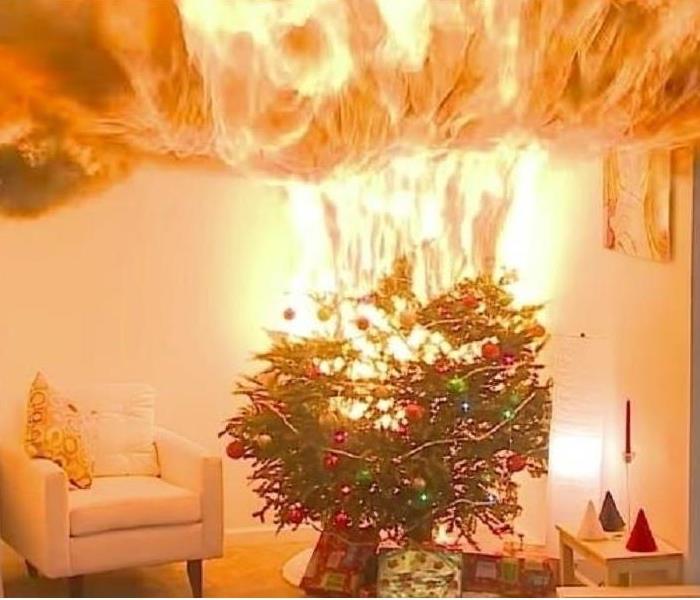 Fire risks increase dramatically every winter season, take extra precautions!
Fire risks increase dramatically every winter season, take extra precautions!
Take precautions now to help prevent winter fires in your Dutchess County home. While winter brings about the holidays, it also brings colder temperatures and increased snowfall, and results in a higher likelihood of residential fires in the Hudson Valley.
In any given year, winter is the most common time for residential fires to begin. While not all the common winter fire causes are specific to the season, they are more common during cooler weather and thus increase the chances for a fire to occur. More festivities involving cooking, the use of candles, holiday décor and trees, utilizing space heaters and fireplaces all add to the increase of chances of a fire occurring.
Behind the Increased Likelihood of Winter Fires:
An Increase in Cooking-
At any time of year, cooking errors are the No. 1 cause of residential fires in the country, but even this statistic is increased in the wintertime. With more baking, holiday meals and group cooking opportunities, the chances for a cooking error tend to become higher during the winter months, leading to an increased fire rate. Never leave cooking food unattended in the kitchen. Keep a fire extinguisher at the ready, and if you’re going to deep fry a turkey, make sure it’s done safely outside and away from any structure (including the deck or garage).
The Risk of Heaters-
Wood stoves, fireplaces and space heaters are all common forms of auxiliary heating during cold weather, and as long as precautions are taken, they are generally safe. However, errors in heating are the second leading cause behind residential fires during the winter months, making safety features and supervision an essential part of these methods. Space heaters should always be plugged directly into the wall, never on an extension cord, and kept far away from flammable items, bedding and decorations. Fireplaces and chimneys should be cleaned by a professional every year to avoid creosote build up and potential hazards.
Candles and Decorations-
Candles and other decorations are another leading cause of residential wintertime fires. Candles are inherently hazardous due to the open flame—it can spread to surrounding areas if conditions are right. Don’t keep them near a door or window and never amongst the holiday décor that is usually super flammable. For electronics, frayed wires and general overheating can pose a fire risk, so it is important to be cautious with those as well.
Christmas trees that haven’t been watered or are drying out pose a huge fire risk. Over 150 home fires each year are caused by Christmas trees. Candles and lighting can spark a fire and a dry tree can go up in flames in seconds. Keep your tree watered regularly and away from any heat source.
Prevention Tips for Wintertime Fires:
Understanding the common causes of winter fires is an important step in prevention. By going about these activities with a safety-focused mindset and keeping the below tips in mind, individuals can help prevent any accidental fires from occurring this season:
- Check smoke alarms once every 30 days and replace every 10 years.
- Always monitor open flames.
- Select space heaters with automatic shutoffs in case they tip over.
- Utilize a screen every time you use a fireplace.
- Draft and practice an emergency escape plan with your household.
If you’ve suffered a fire at your home in Poughkeepsie, Wappingers, Hopewell Junction, Beacon or East Fishkill home or business, we’re here to help. SERVPRO of Western Dutchess County is the local leader in property damage restoration and can help you recover quickly after a fire occurs
Did You Know That Your Clothes Dryer in your Poughkeepsie Home Can Be a Fire Hazard?
11/3/2020 (Permalink)
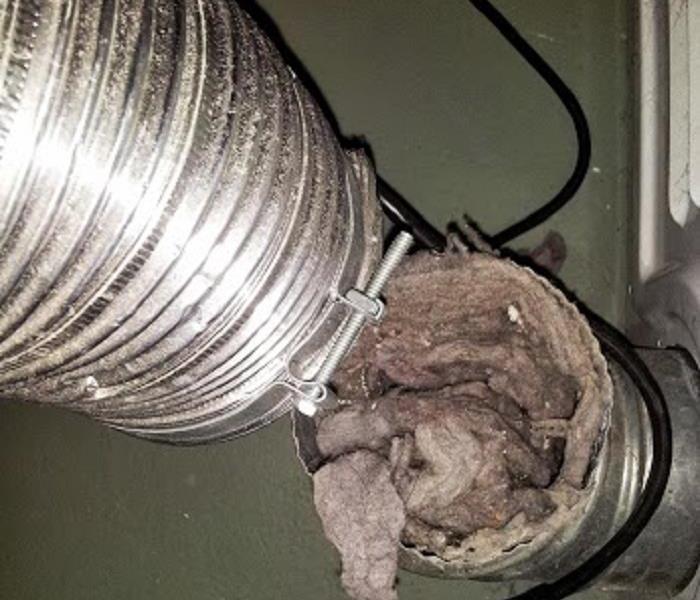 A clogged dryer vent is a fire hazard, get this cleaned at least once a year!
A clogged dryer vent is a fire hazard, get this cleaned at least once a year!
Scary fact, every year firefighters respond to close to 14,000 residential fires caused by clothes dryers. 30% of these fires is due to an accumulation of lint and debris in the dryer vent. Not cleaning out your dryer vent yearly can set you up for a serious fire hazard that's far more serious than your clothes taking longer to dry.
Here are 4 simple practices to ensure safety in your laundry room:
-CLEAN THE LINT FILTER AFTER EVERY LOAD: Not only will this help prevent a fire, but your clothes will dry faster and help keep your machine running smoothly. Not only does fuzz accumulate in the venting, but allergens, pet fur, little rodents and other yuck will just keep piling up until the vents are cleaned.
-REPLACE OLDER ACCORDION-STYLE DUCTS: Plastic or foil accordion-style ducts connecting your appliance to the vent should be replaced with a rigid metal duct that won't sag and collect lint and debris.
-CLEAN THE DRYER DUCT ANNUALLY: The easiest (and inexpensive) way to have it done correctly is by hiring a professional to do so. They know exactly how, where and what, that equals a lot less hassle to you. There is specific equipment involved, clips, ducting and moving of other things that are better handled by a professional.
-CHEMICAL-STAINED CLOTHING IS NOT FOR DRYERS: Do not put flammable-stained garments in the dryer. Substance like gas, cooking oil, cleaning agents, or other flammable chemicals or substances need special care. It's recommended to wash such stained clothing more than once to minimize volatile chemicals, then hang to dry. It’s a fire hazard that isn’t worth the risk and putting them in the dryer will make the stain set. A little dish soap works wonders on chemicals stains too. Rub a little on the spot with a brush or hard sponge and let sit before washing.
IMPORTANT: In the event that a fire does start, keep the dryer door closed to limit its oxygen supply—a fire needs oxygen to keep it going. When it’s safe to do so, call your insurance company to file a claim and then call SERVPRO of Western Dutchess County!
Not only can our professionals take care of restoring your home If your family has experienced a fire, but we ALSO HANDLE DRYER VENT CLEANINGS! SERVPRO® of Western Dutchess County can help 24/7, give us call at 845-831-3600 to learn more!
Keep Your Dutchess County House as Protected as Possible From Fires | SERVPRO® of Western Dutchess County
10/7/2020 (Permalink)
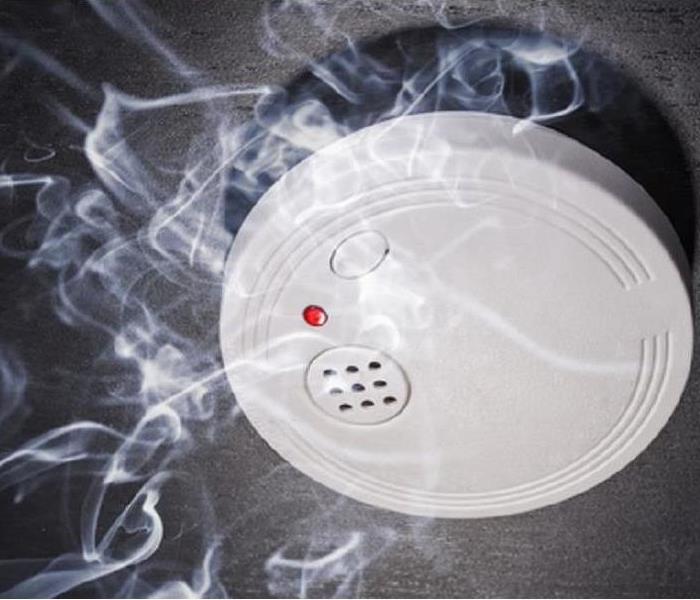 You can never be too protected when it comes to fire safety in your Dutchess County home.
You can never be too protected when it comes to fire safety in your Dutchess County home.
While going through a traumatic event such as a house fire is not on anyone’s agenda, making sure you are taking steps to prevent one from occurring is so important. Once started, fires can spread through the home rapidly and cause significant damage, which is why we advocate for people to practice prevention as much as possible.
Taking steps to prevent a house fire is something everyone can do through their daily actions. Simple safety tips and precautions go a long way in making sure your home and your family are as safe as can be.
Make Sure Your Family is Safe From House Fires
Check your smoke detectors. Smoke detectors installed in your home are one of the most important ways to receive alerts in the event that a fire is started. Detectors should be in every sleeping area and on every level of your home, and checked monthly to make sure they are still operational. Generally, you will want to replace your unit every 10 years, but check the manufacturer’s guidelines to be sure.
In the case of hardwired detectors, make sure they have a battery backup in the event of power loss.
Create a fire escape plan. Being able to escape in less than two minutes after an alarm sounds is so important for staying safe. It is wise to formulate an evacuation plan with your family, including two exits from each room, and rehearse it regularly so the protocol is fresh in everyone’s minds at all times.
Limit your fire risks. The actions you take every day have a big impact on your overall fire risk, too. Small things like keeping flammable objects on the counters while cooking, not staying in the room while a candle is burning and plugging too many things into an outlet can drastically increase the chances that a fire will break out at some point.
Keep a fire extinguisher handy. While you should only use a fire extinguisher if it is safe to do so, having one handy can make all the difference because of how quickly flare-ups can turn disastrous. Any time you are dealing with an open flame, it is recommended that you keep a fire extinguisher nearby so you can use it quickly should the need arise.
If your home is damaged by a house fire, we are here to help. Our expert fire restoration technicians are here 24⁄7 to spring into action as soon as you call. Contact us at any hour to report your damage and receive a quick response.
Fire Safety Tips Just In Time For the Colder Weather in Dutchess County
10/5/2020 (Permalink)
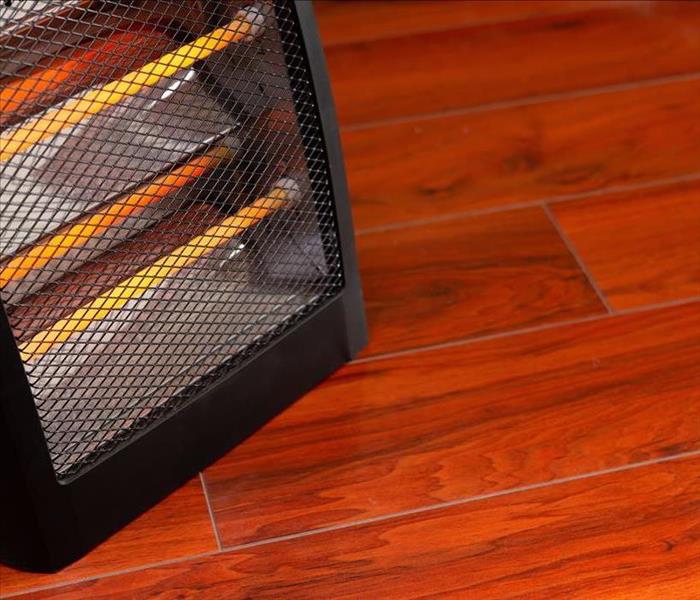 Be fire safe as the colder months start heading our way. You can never know too much fire prevention!
Be fire safe as the colder months start heading our way. You can never know too much fire prevention!
Though it’s not bitter cold yet, the summer days have drawn to a close and we have all begun preparing our homes and outdoor spaces for fall, it is important that we consider how to update our fire safety efforts to complement the season. Many fire safety tips will be the same as the ones you are aware of throughout the year, but as it gets chillier, there are other considerations as well.
Statistically, fires tend to happen more when the weather turns cooler, often due to the use of heating appliances and extra usage of candles. Fortunately, there are plenty of tips to help you stay safe from these risks.
~~Fall Fire Safety Tips for Your Household~~
Stay Safe When Using Space Heaters
When it turns chilly, many of us will reach for the space heaters before turning our central system on. While space heaters can be used safely, they are a leading cause of household fires because of how often they are used improperly. Be sure to keep a three-foot buffer around heaters that is free of flammable objects, and always unplug them if you are not in the room. Keep paperwork, decorations, blankets and pillows far away from the. Also make sure they’re placed on a level surface, just a small bump can cause a big problem.
Be On Alert When Using Candles
Candles are delicious smelling, cozy and add to wonderful décor in your home, but they can also be dangerous. They do still contain an open flame—meaning they do present a level of risk. It is best to never leave candles unattended when lit and to extinguish them before leaving the room. Also be certain that there are no flammable items near a candle that could potentially catch fire if the flame burns too high. Foliage, décor, and any unsecured things that could end up near the flame are huge hazards that should be considered immediately when placing candles in your home.
Keep Your Fireplace Functional
If you have a fireplace, make sure you get it inspected before ever lighting a fire in it. There are many issues that can develop with chimneys that can cause smoke or fire hazards inside the home. Always use a fireplace grate to avoid any accidents and never leave a fire burning unattended.
If you have had damage in your home or business due to a fire, we are here to help you. You can get in touch with us 24/7, we’re always here to help. Contact us today.
Our Comprehensive Fire Damage Restoration Process | SERVPRO® of Western Dutchess County
10/1/2020 (Permalink)
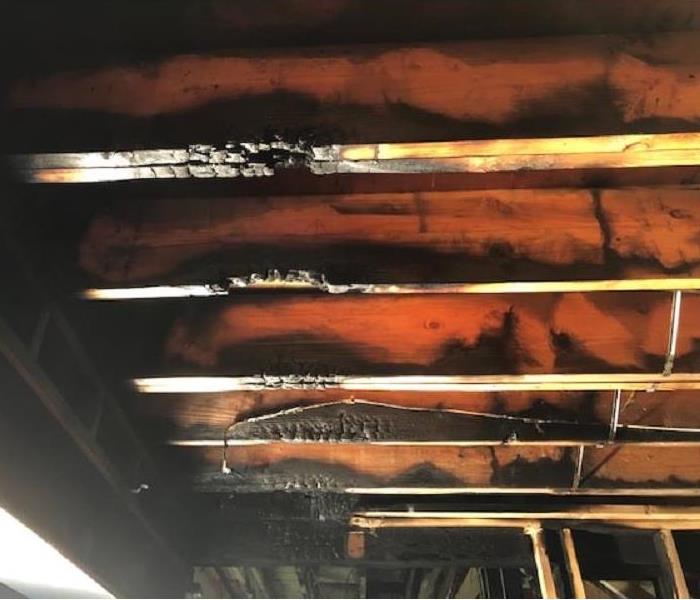 You can count on SERVPRO of Western Dutchess County to handle every aspect of fire damage to your home!
You can count on SERVPRO of Western Dutchess County to handle every aspect of fire damage to your home!
When you need fire damage restoration at your Poughkeepsie, Fishkill, Wappingers, Beacon or Hopewell Junction home, it can be difficult to know where to turn to. Not only is fire damage on its own extremely difficult to deal with, but because of the way that smoke and soot spread through a home during and after a fire, in addition to the water damage caused by the extinguishing process, there are many aspects to consider throughout the restoration process.
After having handled the restoration of fire damage for over 28 years, we are well aware of all that goes into returning your home or business to its pre-damaged state and have created a comprehensive restoration process to handle everything from start to finish, customized to your specific damage. Between restoring, cleaning and rebuilding, we are here to help you after fire damage of any extent.
What to Consider When Looking for Fire Damage Restoration
1. Will They Handle All of the Damage?
When you call us for fire damage restoration, you can be certain that all of your damage will be handled. Not only will our damage restoration professionals the charring from the flames, but we will also handle smoke odors, soot residues, water damage and any cosmetic elements that the fire has damaged. From getting fire odors out of your favorite couch to putting on a final coat of paint to make your house feel like home, we are here to help with all the restoration requirements from start to finish.
2. Will They Get to Me Quickly?
The last thing you want to do after discovering fire damage to your home is have to wait aimlessly for help to arrive. That is why we are here for you 24 hours a day, 7 days a week, and will always get to you as quickly as possible after you get in touch with us regarding your restoration needs. Our expert technicians are local and always here to respond to calls in the community so you never have to wonder if or when help will ever arrive.
If your home has been damaged due to a fire, you can count on us to handle every aspect of the restoration. Contact us at any time to report your damage and receive a quick response from our expert technicians.
Why You Shouldn’t Try To Clean Up Soot After A Fire In Your Poughkeepsie Home
9/24/2020 (Permalink)
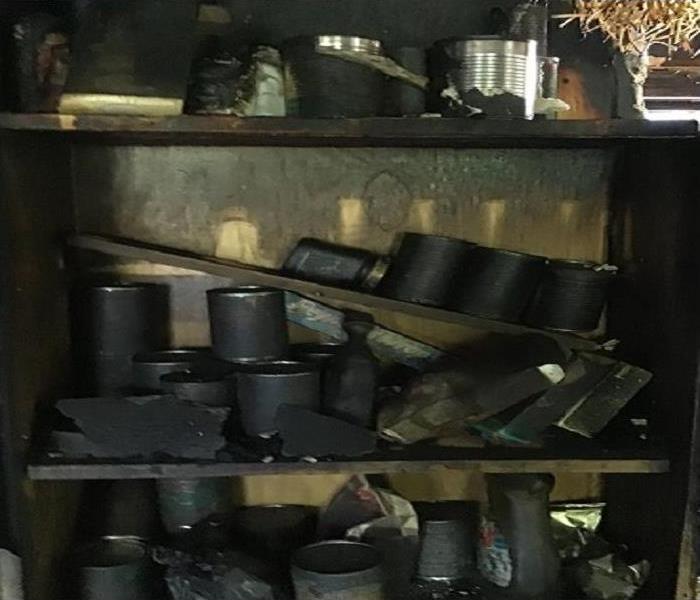 Turn to the fire damage experts at SERVPRO of Western Dutchess County to get your property back to normal effectively and efficiently.
Turn to the fire damage experts at SERVPRO of Western Dutchess County to get your property back to normal effectively and efficiently.
Fires can be devastating even if they're small, and our instincts want to make it go away as fast as we can and start the cleaning ourselves. However, if your home has been subject to fire damage, this hastiness can often hurt more than it helps. Depending on the type of fire (grease, protein, furnace malfunction, etc), there are many differences in how the clean-up should be approached:
1. There Are Different Types of Soot. Because every fire is different, soot can vary greatly in its composition. Some soot has a dry, powdery texture, others will be thick, some are greasy. Looks can be very deceiving in this situation and the best cleaning results come from a restoration company with experience and specialty products to handle it, no matter the type. Tackling soot without knowing what kind it is on your hands can lead to spreading it further, making for a larger cleanup and potentially causing further damage.
2. Soot Contains Toxic Chemicals. Fires require things such as carbon dioxide, oxygen and nitrogen, but there are also chemicals released from every material that the flames came into contact with. Materials such as plastics, textiles and paint are extremely toxic once heated, and soot contains them all. Because of this, improper soot cleaning can cause these toxins to be re-released into the air and infiltrate the home with chemicals.
3. Soot Won’t Stay Put. Soot travels through the air, meaning it won’t remain contained to the area where the fire occurred. It will journey into crevices, adheres to ceilings and infiltrate HVAC systems. Additionally, materials such as fabrics, upholstery and carpets can attract soot from other parts of the home. While it might be tempting to launder these items and scrub down the walls right away, improper cleaning can lead to ruining your belongings beyond repair.
If your Poughkeepsie home has been damaged by a fire, don’t risk causing further issues with DIY cleanup. We understand how every fire damage is different and will formulate a custom plan of mitigation and restoration. SERVPRO® of Western Dutchess County has a team of experienced fire restoration professionals that can get your life back to normal, faster.
Call us 24/7, we’re always here to help!
Tips for Cooking Safety to Prevent Fires in Your Fishkill Home
8/18/2020 (Permalink)
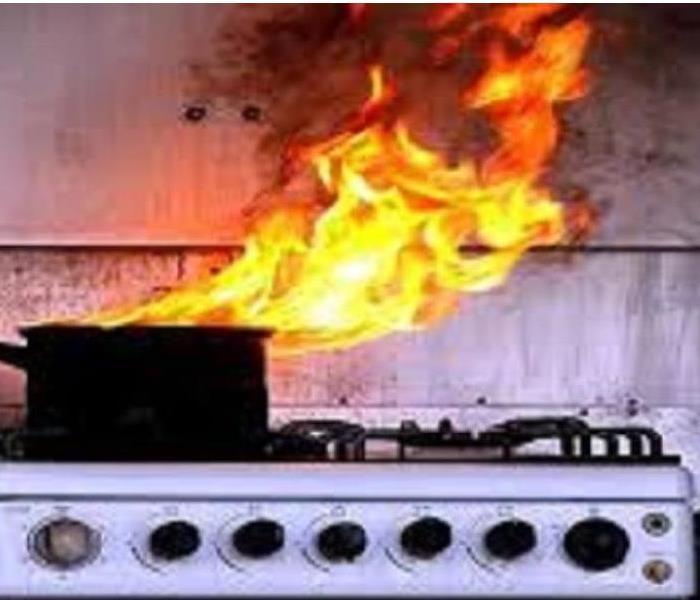 Accidents most definitely happen, but knowing how to cook safely can help prevent a disaster!
Accidents most definitely happen, but knowing how to cook safely can help prevent a disaster!
You have likely heard that cooking is a leading cause of household fires, but did you know it is responsible for nearly 50% of them per year?
Though cooking is something many of us do in some capacity for every meal in our Fishkill, Poughkeepsie, Beacon and Hopewell Junction homes, that everyday occurrence can lead to relaxed safety measures that put you and your family in danger.
Thankfully, when it comes to fires in the kitchen, many can be prevented. If you practice a bit of safety every time you cook, you can significantly reduce your chances of experiencing a kitchen fire of your own.
Here are some helpful safety tips to get you started:
-Stay alert and attentive. Unattended cooking equipment can be extremely dangerous, as it can catch fire and quickly turn to a disaster if no one is in the room to catch it early. You should always remain in the room while the stove, oven or other appliance is on, and it is recommended to completely avoid cooking if you are sleepy or have consumed alcohol.
-Keep clutter away from appliances. While pot holders, wooden cooking utensils and dish towels are an integral part of being in the kitchen, they are also quite flammable. Make sure these things are always placed a safe distance from the stove top to avoid having them accidentally catch fire while you are attending to your food.
-Create a safety buffer around your stove. Just as when you grill, it is a good idea to create a safe zone around your stove, too. This should be a 3-feet area that stays free of children and pets in order to prevent burns and spills that could become fires.
-Keep a fire extinguisher handy. While you should only use a fire extinguisher if it is completely safe to do so, having one handy can prevent a small accident from turning into a major disaster.
Make sure your fire extinguisher is classified to extinguish grease fires, as these are quite common in the kitchen and should never be doused with water.
If you experience a cooking fire, we can help restore your kitchen of all the damage. You can get in touch with us at any time to learn more or get a quick response to your damages.
Prevent Grill Fires With Safety Tips | SERVPRO® of Western Dutchess County
7/29/2020 (Permalink)
 If you suffer any fire damage to your home from a grill, call SERVPRO immediately to get services started!
If you suffer any fire damage to your home from a grill, call SERVPRO immediately to get services started!
There are few things that sum up the enjoyable aspects of summer more than a well-grilled meal eaten outside with your family. Grilling allows you to cook delicious meals (and keep the kitchen clean) while enjoying all that the outdoors has to offer—but it is important to note that with fires as a concern, precautions must be taken.
Grill fires are quite common, occurring over 5,500 times annually according to the U.S. Fire Administration. Fortunately, there are many ways to prevent a grill fire from starting in the first place, which we have listed below.
Stop Grill Fires From Starting With These Tips
Create a safe zone around your grill. It may seem like convenience is the most important consideration when you pick a spot for your grill to sit, but you should not neglect the importance of safety. A flare-up from your grill can be quite large, so it is recommended to have three feet of empty space around it as a fire precaution.
Clean your grill grates often. With each use, your grill grates can become saturated with food and grease that have become stuck over time. Brushing down your grates after each use is always recommended—not only will this keep your grill’s temperatures consistent, but it will also prevent these food bits from becoming too hot and catching fire.
Never leave the grill unattended. The difference between a close call and a full-on fire is often a nearby person with a fire extinguisher, so you should make sure to always have that if you are grilling. If you must take a break, be sure to have someone watch the grill in your place just in case.
Inspect the grill regularly. All things can become worn with age, including the gas connections on your grill. Because this can lead to hazardous gas leaks, you can make a habit to visually inspect your grill before each use to reduce the chances of an issue arising.
If you have a grill fire that does damage to your home, we are here to help. You can call us any time, day or night, to have a quick response from our restoration experts.
Considering the House Fire Recovery Process | SERVPRO® of Western Dutchess County
6/26/2020 (Permalink)
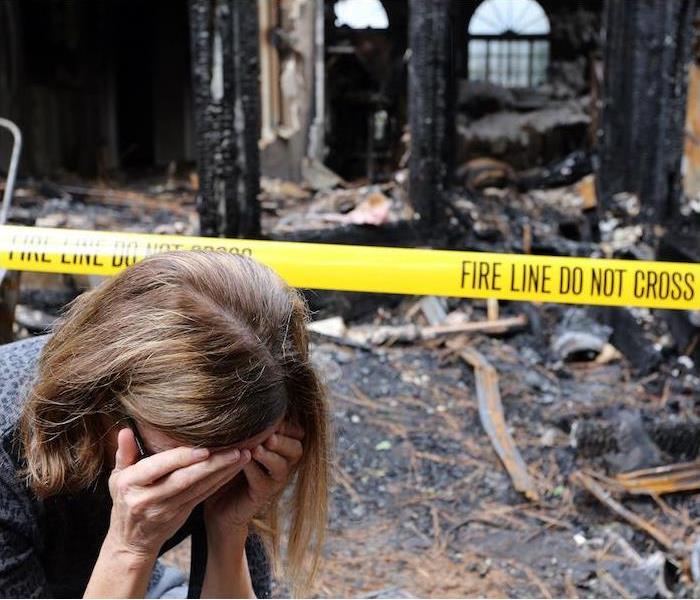 If your home is damaged in a house fire, SERVPRO of Western Dutchess County is here to help 24/7. Contact us for any fire restoration needs.
If your home is damaged in a house fire, SERVPRO of Western Dutchess County is here to help 24/7. Contact us for any fire restoration needs.
Making preparations in case of a house fire at your Dutchess County home is a smart way to keep yourself and your family safe just in case one were to break out. Not only is it crucial to plan for the moment flames start, but you should also have an action plan for the recovery process so you will know what to expect and can handle it with ease.
By being prepared ahead of time, you can significantly reduce your stress and the feelings of overwhelm that can come with the aftermath of a house fire.
Have an Action Plan for the Fire Recovery Process
Prepare yourself for what to expect. You cannot know what your home will look like before you go into it, but understanding how fire causes damage can help prepare you for what to expect. Not only do flames cause charring on objects they come into contact with, but smoke and soot are airborne and can damage other parts of the home as well.
Wait to enter your home. Prioritizing safety is always our top recommendation, including in the aftermath of a fire. You should never go back into your home before officials deem it safe, as they will need to assess the damage and potentially stabilize the structure to lessen the risk of injury for you and your household.
Contact your insurance company. Filing an insurance claim as quickly as possible is always recommended so you can maximize the value of your coverage, but every insurance company varies on what this looks like. Contacting them early on is recommended so you know exactly what to do.
Document the damages. Staying organized is key to making sure nothing falls through the cracks, especially when it comes to keeping track of your belongings. Create a detailed inventory list so you know exactly what has been impacted by a fire, and be sure to take plenty of photos in case your insurance agent requests them for your claim.
Contact your restoration company. The stress and emotional trauma that can linger after a house fire is something to take seriously, as it can be long-lasting. Working with a restoration company you can put your faith into will help you during this delicate process, because you will know your home is in qualified, professional hands.
If your home is damaged in a house fire, you can count on us to help you. Get in touch at any hour for a quick response.
How Quickly a Fire Can Spread in your Poughkeepsie Home
2/14/2020 (Permalink)
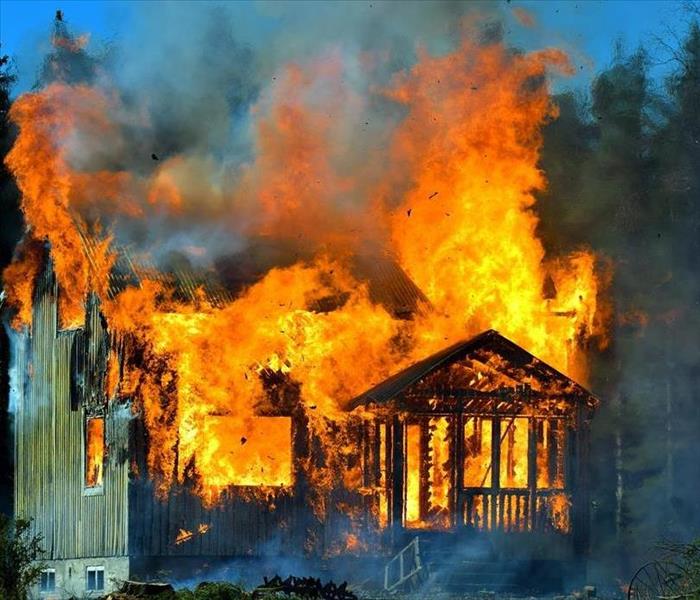 Fires in your home can spread in under 3 minutes, make sure your family is prepared to evacuate quickly!
Fires in your home can spread in under 3 minutes, make sure your family is prepared to evacuate quickly!
We all know that house fires are an extremely dangerous thing to encounter, but that can be difficult to grasp without knowing exactly what goes into the making of a house fire. To help provide some context for how house fires spread so rapidly and how important it is to be able to execute an efficient fire escape plan, we have put together a guide to what fire is, how it spreads and how quickly it can tear through your home.
What Is Fire?
Put simply, fire comes from a chemical reaction between air and a fuel source when it becomes hot enough to ignite. Once this occurs, the fire starts and begins to release the decomposed material (in the form of smoke), char (a pure carbon substance) and ash (which is all of the materials of the fuel source that are not able to burn).
How Does Fire Spread?
All fire needs to sustain itself are heat, fuel and oxygen—commonly referred to as the fire triangle. The oxygen is a given and the fire is producing its own heat, so the flames will begin to search for more fuel throughout the home. This is why a fire can spread so rapidly once the flames begin.
What Is the Typical Timeline of a House Fire?
The general rule of thumb is that you are supposed to be able to execute the entirety of your fire escape plan in under three minutes, but have you ever wondered why that is? Fires spread remarkably fast, making a quick escape plan necessary. Here is the typical timeline of a house fire:
0:00 to 0:30: The fire begins and flames immediately start to grow.
0:30 to 1:00: Flames begin to spread through the room and smoke starts to pollute the air.
1:00 to 1:30: Smoke becomes thicker and the temperature starts to rise.
1:00 to 1:30: The fire alarm sounds and everyone should evacuate immediately.
1:30 to 2:00: Smoke begins to pour into other rooms of the house.
2:00 to 2:30: The temperature in the source room will reach 500 degrees Fahrenheit.
3:00 to 4:00: Flames will continue to spread through the house and engulf the exterior walls.
The numbers speak for themselves, be preparedness with an evacuation plan, make sure your whole family understands and make sure yto include your pets!
If your home has been impacted by a house fire, we are here to help you 24/7. Contact us any time to start your restoration process today!
The Increase & Prevention of Winter Fires in Wappingers homes | SERVPRO® of Western Dutchess County
12/10/2019 (Permalink)
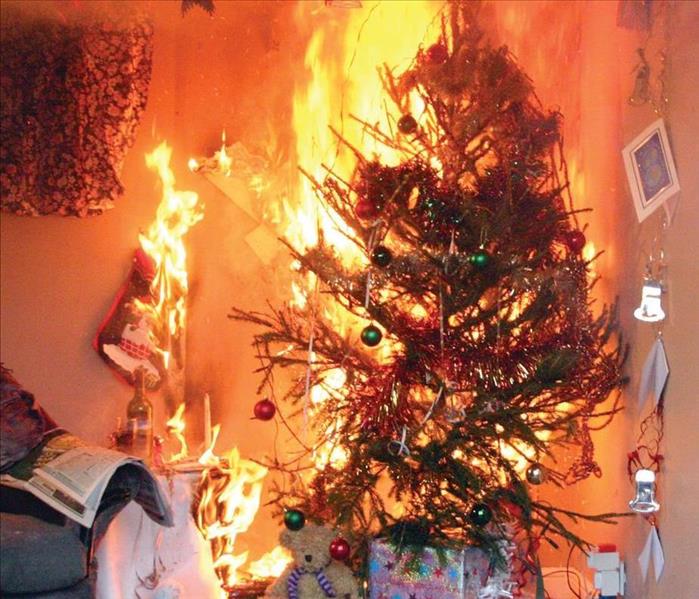 You can take precautions to help prevent winter fires in your Dutchess County home.
You can take precautions to help prevent winter fires in your Dutchess County home.
While winter brings about colder temperatures and increased snowfall, it can also bring a higher likelihood of residential fires in the Hudson Valley.
In any given year, winter is the most common time for residential fires to begin. While not all of the common winter fire causes are specific to the season, they are more common during cooler weather and thus increase the chances for a fire to occur.
Behind the Increased Likelihood of Winter Fires:
An Increase in Cooking-
At any time of year, cooking errors are the No. 1 cause of residential fires in the country, but even this statistic is increased in the wintertime. With more baking, holiday meals and group cooking opportunities, the chances for a cooking error tend to become higher during the winter months, leading to an increased fire rate.
The Risk of Heaters-
Wood stoves, fireplaces and space heaters are all common forms of auxiliary heating during cold weather, and as long as precautions are taken, they are generally safe. However, errors in heating are the second leading cause behind residential fires during the winter months, making safety features and supervision an essential part of these methods.
Candles and Decorations-
Safety in decorating is not commonly discussed, but candles and other decorations are another leading cause of residential wintertime fires. Candles are inherently hazardous due to the open flame—it can spread to surrounding areas if conditions are right. For electronics, frayed wires and general overheating can pose a fire risk, so it is important to be cautious with those as well.
Prevention Tips for Wintertime Fires:
Understanding the common causes of winter fires is an important step in prevention. By going about these hazardous activities with a safety-focused mindset and keeping the below tips in mind, individuals can help prevent any accidental fires from occurring this season:
- Check smoke alarms once every 30 days and replace every 10 years.
- Always monitor open flames.
- Select space heaters with automatic shut-offs in case they tip over.
- Utilize a screen every time you use a fireplace.
- Draft and practice an emergency escape plan with your household.
If your home has been impacted by a fire, call us right away. We are leaders in restoration and can help you recover quickly after a fire occurs.
Proper Techniques for Home Restoration After a Fire | SERVPRO® of Western Dutchess County
11/5/2019 (Permalink)
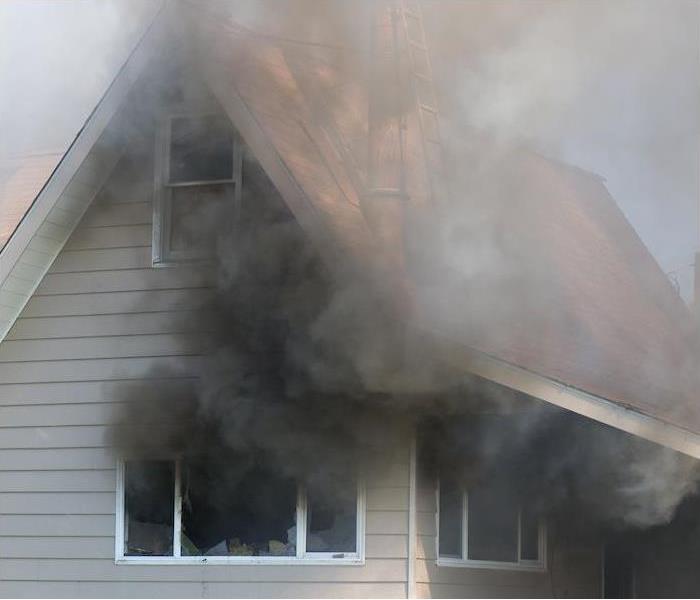 Having a team on your side after a disaster can help relieve stress. SERVPRO of Western Dutchess County is here to help when a fire strikes
Having a team on your side after a disaster can help relieve stress. SERVPRO of Western Dutchess County is here to help when a fire strikes
Any time of year is a good time to practice fire preparedness, but homeowners should be especially careful during the winter months. The highest number of home fires are in the winter, with December being the peak.
Planning for a fire in advance is one of the best ways to keep yourself and your loved ones safe. A fire escape plan and emergency precautions are helpful in the moment, but knowing what to do after the fact can also provide valuable peace of mind. That is where picking a restoration company in advance comes into play.
The Process of Fire RestorationWhen you pick your fire restoration company in advance, you want to know that you can call them at any point and have them respond quickly. Not only does SERVPRO of Western Dutchess County guarantee that for our customers, but we also guarantee that we will send highly trained technicians to the scene who are well-versed in a variety of cleanup scenarios. Here are the ways we can help:
Structural Cleaning
Correctly repairing a home’s structure after a fire is essential, and it is something we take very seriously. By first performing testing to determine the true extent of the damage, we will then move in with our equipment and begin the restoration process. We handle reconstruction, soot removal and more on walls, doors and floors, and can even prepare surfaces for fresh paint.
Contents Cleaning
Restoring contents is typically less costly than replacing all your belongings, and allows you to keep the things you already own and like. We have both wet and dry cleaning tools to ensure each item gets the care it needs, from art to area rugs and most things in between. A full cleaning and deodorizing ensures the items are still safe to use and do not have any lingering odors.
Deodorization Services
The smoke and soot left behind in the air after a fire are more than just harsh scents—exposure to them has been linked to health issues such as cancers as well due to the chemicals and compounds in combusted material. We utilize air scrubbers to take care of these particles, making the air quality healthy once again throughout your household.
If you’ve been affected by a fire, reach out to us right away! We are here 24⁄7 to help you recover.
Get your Dryer Vent Cleaned to Avoid a Fire Hazard in your Dutchess County home!
10/10/2019 (Permalink)
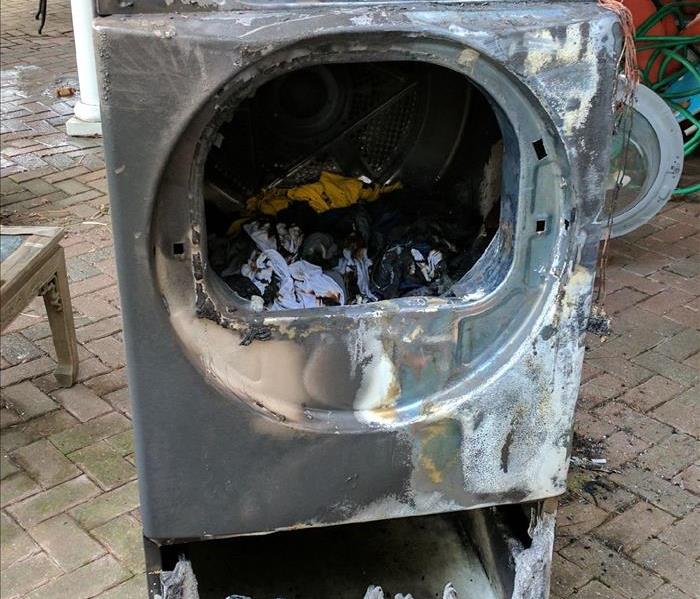 Clogged clothes dryer vents are a fire hazard! Get yours cleaned out at least once a year, call us to schedule your next dryer vent cleaning!
Clogged clothes dryer vents are a fire hazard! Get yours cleaned out at least once a year, call us to schedule your next dryer vent cleaning!
According to Consumer Reports (2018), every year firefighters respond to close to 15,000 residential fires caused by clothes dryers. 80% of these fires is due to an accumulation of lint and debris. Not cleaning out your dryer vent yearly can set you up for a serious fire hazard that's far more serious than your clothes taking longer to dry from a clogged vent.
Here are 4 simple best practices to ensure safety in your laundry room:
- CLEAN THE LINT FILTER AFTER EVERY LOAD- not only will this help prevent a fire, but your clothes will dry faster!
- REPLACE OLDER ACCORDION-STYLE DUCTS- Plastic or foil accordion-style ducts connecting your appliance to the vent should be replaced with a rigid metal duct that won't sag and collect lint.
- CLEAN THE DRYER DUCT ANNUALLY- (at least)- There are a few DIY ways to clean your dryer vent but the easiest (and not pricey) way to have it done correctly is by hiring a professional to do so. They know exactly how, where and what, that equals a lot less hassle to you.
- HANDLE CHEMICAL STAINS WITH CARE- Do not put flammable-stained garments in the dryer. Substance like gas, cooking oil, cleaning agents, or other flammable chemicals or substances need special care. It's recommended to wash such stained clothing more than once to minimize volatile chemicals, then hang to dry. Not only will putting them in the dryer make the stain set, it’s a fire hazard that isn’t worth the risk.
IMPORTANT: In the event that a fire does start, keep the dryer door closed to limit its oxygen supply—a fire needs oxygen to keep it going.
Not only can our professionals take care of restoring your home If your family has experienced a fire, but we ALSO DO DRYER VENT CLEANINGS! SERVPRO® of Western Dutchess County can help 24/7, give us call at 845-831-3600 to learn more!
Fire Prevention Tips for your Poughkeepsie, Wappingers, Beacon or Fishkill home
10/9/2019 (Permalink)
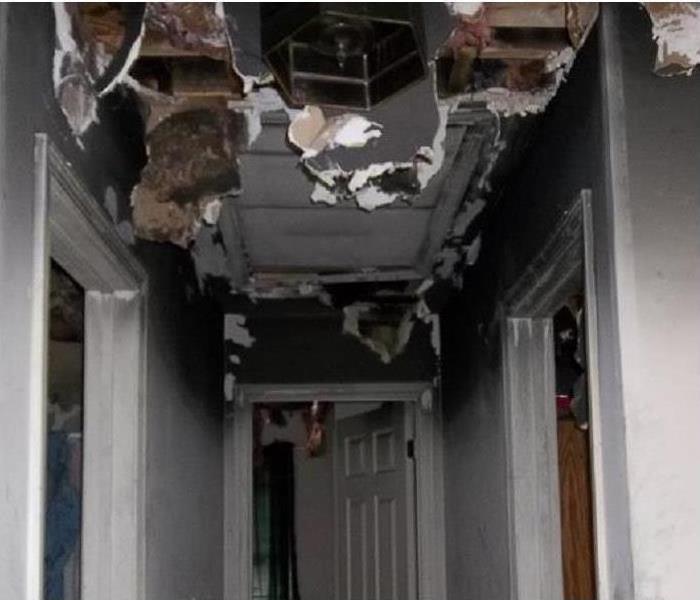 Stay safe with some simple fire prevention tips!
Stay safe with some simple fire prevention tips!
A fire can happen in less than 3 minutes. It’s a terrifying thought that there is such little time to get everyone to safety. There are several, simple things you can do in your home to help prevent fires.
-Test your smoke detector batteries once a month. Set a reminder on your phone to make it consistent. Keep in mind that smoke detectors have a life of 8-10 years, replace them when needed.
-Install smoke detectors in the right spots- When placed in the correct locations in your home, it’s your best bet of getting to safety quickly.
-Inspect heating sources- Regardless of the type of system you have, an annual inspection will reduce any risks.
-Keep the oven and stove clear of anything- Make sure there are no curtains, towels, cookbooks, or anything flammable by or on the stove and oven. Kitchen fires are the most common places for house fires.
-Stay in the kitchen when cooking- Make sure pot handles are turned in and don’t leave the room with any food cooking. Turn off everything and take the pot or pan off the heat if you need to.
-Check the dryer and have dryer vent cleanings performed once a year.
-Maintain electrical cords- don’t keep them under a rug as cords produce heat. Use extension cords sparingly and unplug appliances that feel warm. Check for fraying or damage and replace immediately.
-Locate the shut-offs- All utilities have shut-off valves or switches in or on your home. Gas, appliances, circuit breakers, and water. Make sure all family members know where, when and how to use them.
-Keep flammable products away from heat sources- hair products, cleaners, and shaving cream and combustibles like paint and gas should be kept in a cool, dark place.
-Never leave candles unattended- Keep them in secure, tip-proof holders and never near curtains or blankets. Set a reminder on your phone to extinguish them before leaving or sleeping.
-Practice fireplace safety- put a metal screen in front of the area, don’t leave the fireplace unattended and place the ashes in a metal container. Have a chimney cleaner come at least once a year to prevent build up that could cause a fire.
-Prevent wildfires- Keep a bucket of water available if you’re using a fire pit, having a bonfire or using a burn barrel. It only takes one spark!
-Keep fire extinguishers handy- Have one in the kitchen and other high risk areas like a fireplace or garage. Learn the P.A.S.S system for how to use it effectively.
-Know your location- firefighters need an exact address, make sure every member knows it.
Learn all you can about fire prevention and talk it over with your family members. If you do ever experience fire damage, call the trained experts at SERVPRO of Western Dutchess County 24/7, we’re here to help and will make it Like it never even happened.
The what and how of fire extinguishers in your Western Dutchess County home
10/4/2019 (Permalink)
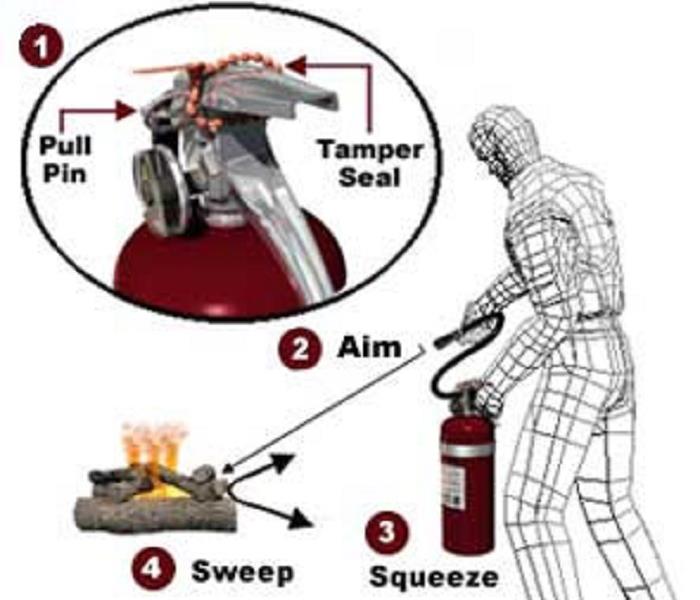 Learn what type of fire extinguisher is best for your home and how to use it in an emergency.
Learn what type of fire extinguisher is best for your home and how to use it in an emergency.
Most of us have fire extinguishers of one size or another in our homes, especially in the kitchen. A fire extinguisher can help put out a fire before emergency personnel arrive or they can help you exit your home safely.
Not every extinguisher is for every fire, a little clarification can really help determine if you’ve got the right one for the right type of fire.
What type do you get?
All household fire extinguishers have 3 classifications: A, B or C. Some models have a combination of all three extinguishers in one.
-A is for ordinary combustibles like trash, wood and paper
-B is for liquids & grease (think more like stove-top fires)
-C is for electrical equipment
-D extinguishers are designed for use on flammable metals. Not typically used or found in households.
Keep in mind, according to the National Fire Protection Association, each floor of your home should have an extinguisher.
How do you use a fire extinguisher?
To use the extinguisher properly, you want to use the PASS method:
-Pull the pin. Hold the nozzle pointing away from you and release the locking mechanism.
-Aim low. Point the extinguisher at the base of the fire instead of at the flames themselves. Standing at least 6 feet away from the fire is important! Do not touch the plastic discharge horn on a CO2 extinguisher as it gets super cold and may damage your skin.
-Squeeze the lever slowly and evenly while keeping the extinguisher upright.
-Sweep the nozzle from side-to-side until the extinguisher runs dry.
Read the instructions on the fire extinguisher and become familiar with them before a fire breaks out. Remember, extinguishers do have limitations so make sure you have the correct extinguisher for your home and type of fire.
Whenever you use an extinguisher, whether you ran it dry or used it briefly, it's important to replace it or refill it right away. This is also the rule for any gauge that goes down to the red zone over time.
Even though you take precautions against fire damages, they can still sometimes occur. If you experience fire damage in your home, don't hesitate to contact the experts at SERVPRO of Western Dutchess County at 845-831-3600 to help make this disaster "Like it never even happened."
What to Do Before, During and After a House Fire | SERVPRO® of Western Dutchess County
10/1/2019 (Permalink)
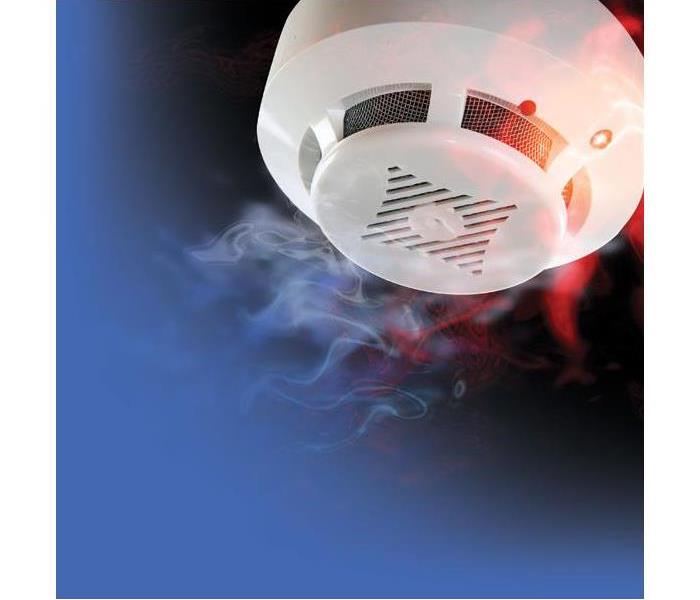 It's important to know what to do before, during and after a fire, every little thing counts!
It's important to know what to do before, during and after a fire, every little thing counts!
Knowing what to do in the event of a house fire is important. Though we all hope a fire will never happen to us, the reality is that there were nearly 500,000 fires in 2017 alone. Though they are always an alarming situation, planning ahead can go a long way in helping you feel safe and prepared. While practicing general fire safety is best, knowing what to do at every stage is essential for keeping yourself and your family safe.
By compiling resources from the National Fire Protection Association and Ready.gov, we’ve assembled a complete overview of preparedness, safety precautions and actions to take after the flames subside:
Before a Fire:
? Install smoke alarms in each bedroom and on each floor of the home, and be sure to check them once per year.
? Ensure the house number is visible from the road for emergency responders.
? Identify two ways out of each room and create a drawing of the floor plan reflecting escape routes.
? Identify an outdoor meeting place for the whole family, such as a neighbor’s mailbox.
? Alert any visitors or overnight guests to the plan should an emergency occur.
? If you have young children or family members who have limited mobility, assign them to a “buddy” who can make sure they get out safely.
? Make sure all escape routes are free of clutter and easily accessible for all family members.
During a Fire:
? Call 911 as soon as you are able.
? Because smoke rises, stay low to the ground to avoid inhalation as much as possible.
? Always feel the door and doorknob for heat to determine if a route is safe.
? Open doors with caution in case the fire is just beyond.
? If your clothes catch fire, remember to stop, drop and roll right away.
After a Fire:
? If you are in need of assistance, contact The Red Cross or other local emergency relief service.
? Contact your insurance company and a fire-certified restoration company as soon as possible.
? Always wait for the approval of the fire department before re-entering your home, and have a professional reconnect utilities.
? Take an inventory of all damaged items before cleanup begins.
? Save receipts for any expenditures accrued due to the fire.
If your home has been damaged in a fire, don’t hesitate to reach out to us 24/7! We are fully certified in fire restoration and can respond quickly to damages.
Residential Fire Prevention Strategies | SERVPRO® of Western Dutchess County
8/7/2019 (Permalink)
 Be prepared and in the know when it comes to fire safety and prevention!
Be prepared and in the know when it comes to fire safety and prevention!
Structural and property damage from residential fires can be significant, causing expensive damage for homeowners and putting the household in danger. Because of how devastating they are and how frequently they occur, practicing proper fire prevention techniques is essential to staying safe and gaining peace of mind.
Residential Fire NumbersMany consider fires to be an uncommon occurrence, but according to the numbers, they occur quite often. A fire occurs every 24 seconds, as reported by the National Fire Protection Association.
Over half of residential fires are caused by cooking in some manner. Utilizing caution when cooking with open flames can go a long way in residential fire prevention.
Residential Fire PreventionBecause of how quickly fires can grow, preventing them from starting is the most effective method of fire safety. Household objects can quickly turn hazardous if conditions are right, but there are many ways to keep the risk of a residential fire at bay:
Inspection of the smoke detector. Use the smoke detector’s test button to check the batteries once each month. Every 10 years, the unit should be replaced with an updated model.
Disposal of dryer lint. An excessive amount of lint can be a fire hazard due to the heat of the dryer. Dispose of dryer lint in the tray after each load as a cautionary measure.
Attend to open flames. Just because one uses a flame each day for cooking or fireplaces does not mean that it cannot pose a hazard. Always attend to open flames and never leave the room when one is burning.
Maintain cables. Cords come with a safety coating that protects the wires and lessens the fire risk. When the cables become frayed and worn, the wires become exposed and create a threat. Check cables often and dispose of frayed ones immediately.
Properly store products. Everyday household products can also pose a fire risk. Read the label of cleaners, household chemicals and aerosol cans to determine the safest way to store them.
If your home has suffered damage from a fire, give us a call. We are certified in fire and soot remediation, and here to help 24⁄7.
Kitchen fires in your Western Dutchess County home can leave pungent, lasting odors.
7/23/2019 (Permalink)
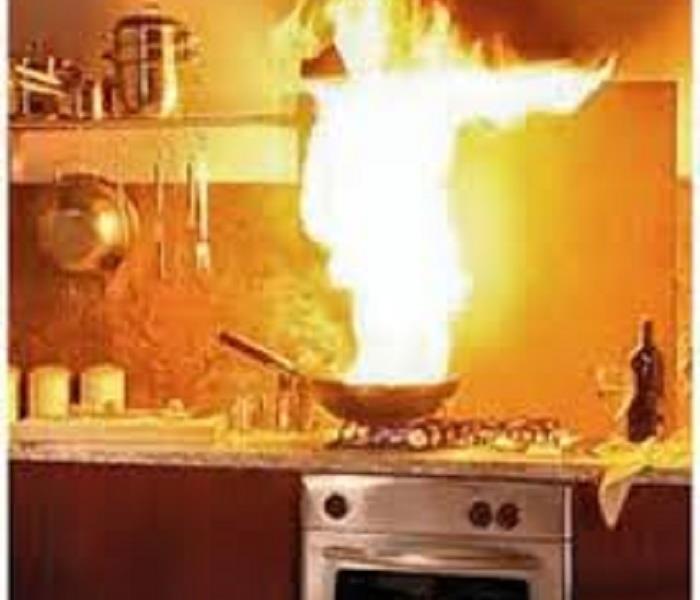 Kitchen fire odors and damage can permeate throughout the home more than you think.
Kitchen fire odors and damage can permeate throughout the home more than you think.
Here are some important facts regarding this type of fire:
*Protein fires generally leave little visible residue, often confusing the untrained eye. The smell is there but hard to pinpoint where it could be coming from.
*They create a significantly more distasteful smell than most other fires.
*The nature of the burn causes the odor to permeate the home even more completely than other fires, sometimes the damage can require a sealing agent or even repainting to completely eradicate the odor.
*The damage may require multiple attempts and methods to achieve the best results.
*Often, because of the strong link between smell and memory, a homeowner may experience “phantom odors,” where the memory of the event causes reproduction of the odor even after thorough cleaning. You don't want a reminder of a stressful event every time you walk in the kitchen.
Don’t tackle this issue by yourself, let the trained and experienced experts at SERVPRO of Western Dutchess County take care of it. We’re here to help when you need it most and when fire and odors take control of your life, we’ll help take it back. You'll be amazed how fresh and clean our team can make your home, "Like it never even happened."
How to Avoid Fire Hazards When Grilling This Summer | SERVPRO® of Western Dutchess County
7/1/2019 (Permalink)
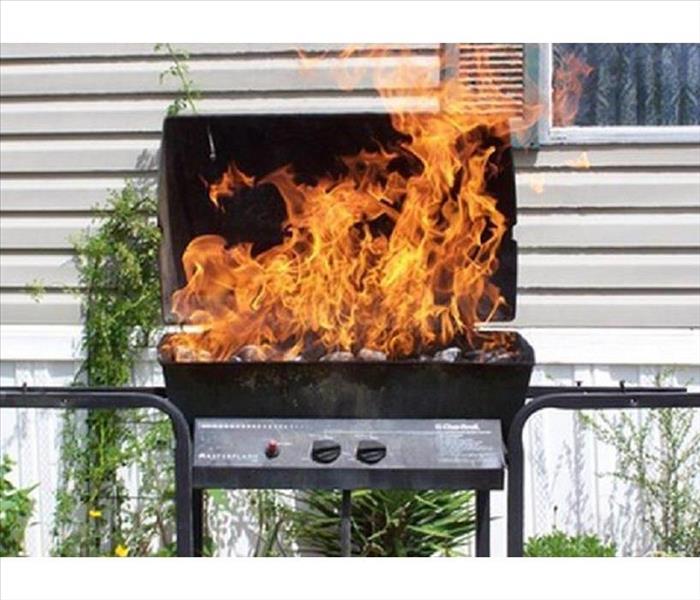 Grill fires can cause more damage than you could anticipate, be safe this grilling season!
Grill fires can cause more damage than you could anticipate, be safe this grilling season!
Grill fires can happen to any grill and any person, leading to serious damage to your deck and home in Poughkeepsie, Fishkill, Wappingers or Beacon. In fact, the National Fire Protection Association reports that grills were involved in over 10,000 home fires in a four-year span, with July being the most popular time for these incidents.
That’s why it is important to be aware of what conditions can cause a grill fire—and how to prevent one—so you can stay safe while having summer fun.
~What Causes Grill Fires?
While there is a fire risk anytime someone is cooking, because of the open flame and direct contact, grills pose a unique risk for flare-ups. Common causes of grill fires include:
* Overfilled grease pans
* Burner tubes blocked due to debris or insects
* Uncleaned grill grates
* Grilling near combustible materials—heat radiates farther than you may think!
* Leaving grills unattended
~How to Prevent Grill Fires
The best way to avoid accruing damage from a grill fire is by preventing one from happening in the first place.
Here are a few ways you can care for your grill and prevent fires, too:
- Clean your drip pans frequently. Cleaning your grill is the best way to prevent grease fires and flare-ups. Under the cooking grids and burners, every grill is equipped with a drip tray. When these trays become full and reach high temperatures, grease fires can occur. Check your pans or trays every time you use the grill to ensure they are not getting overfilled.
- Scrape down cooking grates. Not only do meat and grease that are dried onto your grill grates harbor bacteria that can affect the outcome of your meal, but they can also cause dangerous fires. After preheating your grill, use a grill brush to scrape off grates—and scrape again after cooking. It is also advised to frequently give grates a scrub with soap and water while the grill is cool.
- Keep safety supplies nearby. Baking soda is an extremely effective fire extinguisher, as it quickly cuts off oxygen the fire needs. Keep baking soda and a fire extinguisher nearby each time you grill to smother any flames.
Tip: Never use water to put out a grease fire, as it can actually cause the flames to spread.
If you’ve experienced fire damage from a grill or any other occurrence, SERVPRO® of Western County is here to help you! Give us a call today to talk with one of our fire remediation experts. We're here to help, 24/7 for emergencies.
When was the last time you tested the smoke detectors in your Western Dutchess home?
6/21/2019 (Permalink)
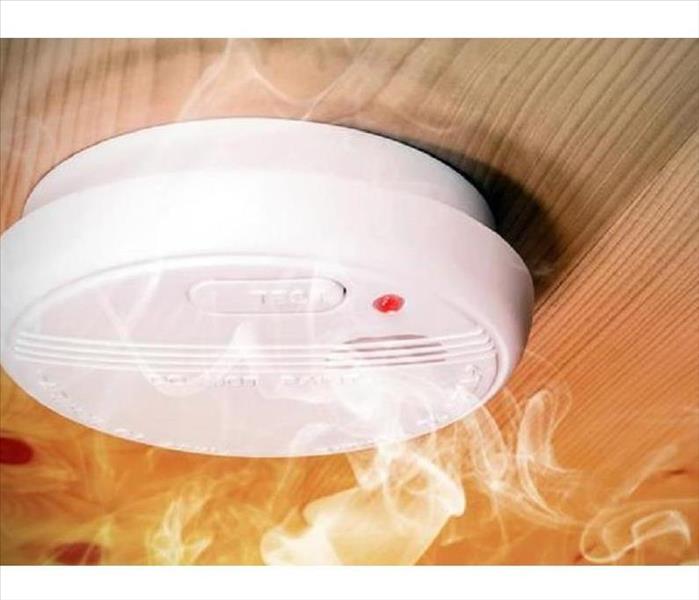 Just a few minutes once a month can help in a fire emergency!
Just a few minutes once a month can help in a fire emergency!
The National Fire Protection Association (NFPA), states that approximately 3 out of 5 fire deaths in a residence are due to either malfunctioning smoke alarm or no alarms at all. Of the ones that had detectors, only about half of the fires did not work due to missing batteries, debris-covered detectors or disconnected wiring. When you have properly installed and tested smoke detectors, they can give everyone extra time to get to safety quickly. It’s a minor amount of money and time to give yourself some good piece of mind should an emergency arise in your Poughkeepsie home.
The easiest way to go about it is to have smoke detectors installed outside every of every bedroom, inside every sleeping area, AND on each level of the house, including the basement. Smoke rises, so it’s important to have them on each level of the home.
Put a note on your calendar or smart phone to test your smoke alarms once a month including checking the batteries and the wiring. If you hear chirping every few minutes from the detector, the batteries need to be replaced. If you have one that has non-replaceable batteries, the entire unit should be replaced every 10 years.
If there's built-up dust or paint or anything that could penetrate the sensors, clean it off or replace with a new detector.
Make sure you and understand the manufacturers specific instructions as some units need new batteries every year and some do not. Each manufacturer’s website also has some great tips for trouble shooting.
Unless replacing with new, don’t ever disable a smoke detector for any reason, it’s not a good idea to think that you’ll remember to replace the batteries tomorrow or buy a new one before there’s a fire. You can also reach out to your local fire department if you need help or you can click here for more information. We urge you to check the smoke detection system in your home as soon as possible, this is not a risk worth putting off.
In the event you’re dealing with fire, smoke or water damage, SERVPRO of Western Dutchess County is here for you, ready to help no matter what. We’re here to help and will make any disaster “Like it never even happened.”
Real facts and how we can help if you suffer a fire in your Poughkeepsie home
6/12/2019 (Permalink)
 Smoke and water damage affects every single thing in the home if you've suffered a fire, nothing is immune to the it.
Smoke and water damage affects every single thing in the home if you've suffered a fire, nothing is immune to the it.
It might seem like a made-up statistic, but house fires are reported to fire departments about every 24 seconds and cost thousands of lives each year and causing enormous damage to homes and buildings. If a fire starts in your Fishkill home, you have very limited time to get your family and pets to safety.
Smoke and fire damage can be severe and if the home survives the fire, it should be inspected, contents removed, the home quickly cleaned and recovery actions in place to avoid permanent or secondary damage to your property.
When you've been told it's safe to return to your home, call SERVPRO of Western Dutchess County any time of day to help restore your home from the fire, smoke and water damage. Our highly trained teams have the experience and expertise to tackle any kind of restoration and have been trained with a “restore vs. replace” mind frame whenever possible to help keep some costs low.
If the fire consumed your furniture and belongings, you’re going to have a wet, scorched mess left behind. Leather, fabric, and wood will trap smoke smells and usually can be restored. In addition, smoke and soot particles can get trapped inside of your HVAC system as well, we can take care of cleaning those mechanicals too. You’ll be amazed how fresh and odor-free your home will be!
SERVPRO of Western Dutchess County will remove everything and take your salvageable contents to be cleaned and restored in our local warehouse. If needed, we can also help restore your damaged documents and photos. Once the cleaning process is completed, we will then address the soot, water, and fire damage restoration to your home and to your HVAC system. There is no service we can’t provide from start to completion to a restored and clean home!
If you experience Fire, smoke and water damage anywhere in Western Dutchess County, we're here to help! Call us at 24/7 at 845-831-3600 and we’ll help make it "Like it never even happened."
Grilling safety tips for all those who love to barbecue at their Dutchess County home
5/24/2019 (Permalink)
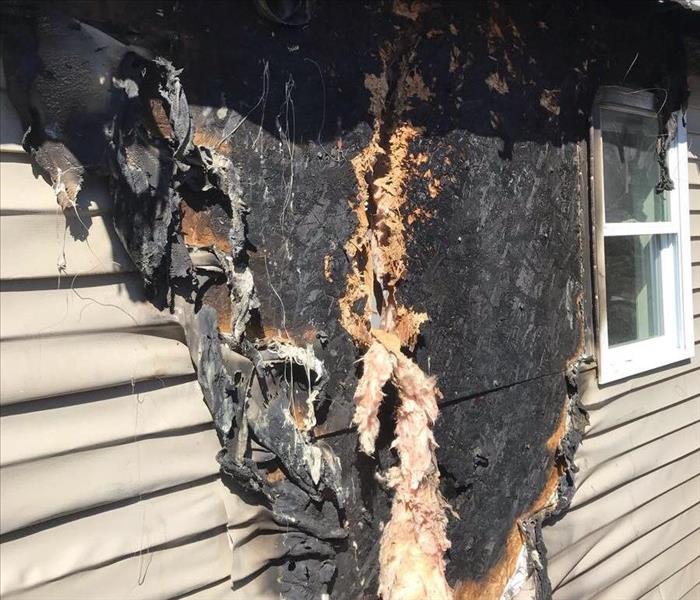 Never assume your grill is cool enough to be moved up against your home.
Never assume your grill is cool enough to be moved up against your home.
The Hudson Valley is starting to enjoy the weather and more people are using their outdoor grills….and the number of grill-caused fires in Western Dutchess County goes up.
According to the National Fire Protection Association, outdoor grilling causes an average of 8,900 home fires. Gas grills cause more home fires than charcoal grills as most people, about 64% of households, own gas grills.
Regardless of the kind of grill you might have, there are some important BBQ safety tips that will help keep you safe during barbecuing season:
-Always a good idea to check for propane leaks on your gas grill. Try a soap and water mixture on the hose to check for leaks when the gas is on (it will bubble where the leak is), or you might notice a gas odor near the barbecue or maybe there's a flame that just won’t light.
-Grill away from any structures. Gas and charcoal grills are made for outdoor use only but more than 25% of home fires start on a balcony or open porch. Even when you’re done cooking, a grill is still a fire hazard, DO NOT MOVE the grill near your home. Never leave it unattended and don’t try to move the grill when it’s hot or still lit. A grill will stay hot for at least an hour after use.
-Be careful with charcoal starter fluid, if you use a charcoal grill, only use charcoal starter fluid. If the fire starts to go out, it is not a good idea to add starter fluid or any other flammable liquids to the fire.
-Keep your grill on a flat surface that is stable, make sure it can’t be tipped over.
-Remove grease or fat build-up often. A clean grill helps food taste better too.
-Never use water to put out a grease fire. Always keep baking soda and a fire extinguisher nearby for emergencies. Baking soda will help control a grease fire.
While all safety measures can be followed, things just happen accidentally. Help decrease the chances of a fire by knowing the grilling safety tips.
If you ever suffer fire damage, SERVPRO of Western Dutchess County is here to help, 24 hours a day, 7 days a week. We'll make it "Like it never even happened."
How to handle fire and smoke damage in your Western Dutchess County home or business
4/25/2019 (Permalink)
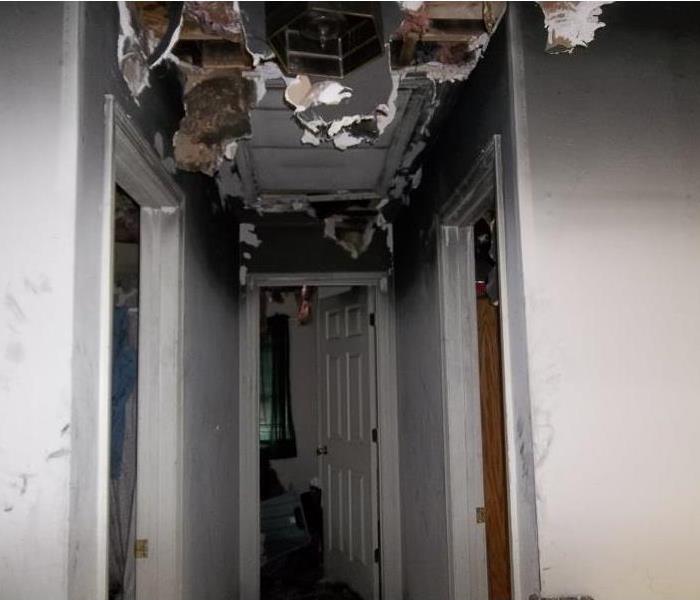 There are some important things to remember when dealing with fire, smoke and water damage!
There are some important things to remember when dealing with fire, smoke and water damage!
Dealing with a fire brings a whole set of things to take care of that you probably haven’t given much thought to before at your Dutchess County property.
We’re here to help you every step of the way in terms of what to do and not to do in case of a fire. Once the firemen have deemed it safe to go in (in some cases they won’t), here are some important things to consider in this situation:
-DO NOT attempt to consume food or beverages that have been stored close to fire, heat or water. They could be contaminated.
-DO NOT wander around inside the property. Keep your movements limited to help prevent soot particles from getting embedded into upholstery and carpet. Keep your hands clean to avoid further soiling.
-DO NOT turn on ceiling fixtures, they could’ve gotten wet or damaged and could cause electrical shock. In most cases, the electric has been turned off anyway as to not be a danger for the firefighters.
-DO NOT attempt to clean carpets, garments, electrical appliances, walls or painted surfaces BEFORE contacting SERVPRO of Western Dutchess County professionals. We are trained and certified with most innovative equipment and most effective methods of cleaning smoke and soot from everything in your home, including electronics, paperwork, photos and artwork. Let our teams take care of the hard part, it’s one less thing for you to have to consider in a time like this.
SERVPRO of Western Dutchess County will work directly with your insurance company to help get your home and life back the best way possible. You’ll be amazed at how clean, fresh and back to normal your property or business will be using the experts from SERVPRO of Western Dutchess County. Check out some of our work here!
Another valuable fire safety tip when it comes to dryer vents!
12/4/2018 (Permalink)
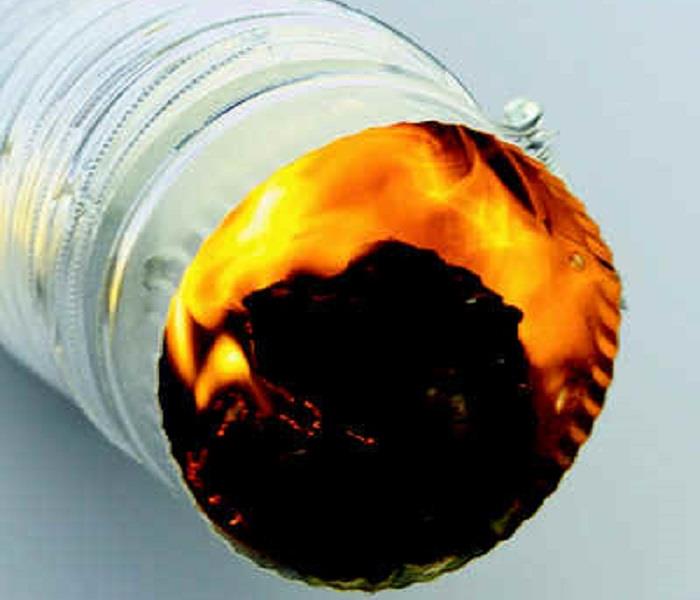 Good cleaning tips can help prevent this scary situation
Good cleaning tips can help prevent this scary situation
Protect your clothes—and possibly a whole lot more—with these simple maintenance tips:
Not taking care of your dryer causes several issues, starting with longer drying times, which can lead to shrunken clothes and heat-damaged fabrics. It can also drive up your utility bills, since the dryer is one of the more energy-intensive appliances in the home.
Another symptom of poor dryer maintenance: your dryer's automatic cycles could start to be less accurate, resulting in laundry that's either damp or dried to a crisp.
Last but certainly not least, a neglected dryer poses a serious fire hazard. In fact, some 7,000 fires, 200 injuries, and 10 deaths are attributed each year to dryer fires, according to estimates by the Consumer Product Safety Commission. Not cleaning the dyer is the leading cause of the blazes.
Here’s how to get peak performance, efficiency, and safety out of your clothes dryer in a few simples steps.
Step 1: Empty the Lint Screen
This needs to happen every time you use the dryer. Not every week or every so often—every single time. If you allow too much lint to build up on the screen, heated dryer air won’t move freely through the machine, which will prolong drying times.
Step 2: Clean the Dryer Vent
Even if you’re diligent about emptying the lint screen, small fibers will get through the trap and into your dryer vent. Left unchecked, this lint can slowly snowball, to the point where an errant spark could lead to a serious conflagration inside the dryer vent. That’s why it’s critical to clean the dryer vent every few months or so, depending on how often you use the dryer and the types of laundry you dry.
It’s a pretty simple task, assuming you can access the dryer vent by pulling the dryer away from the wall (if not, you’ll need to hire a professional). Always disconnect the dryer from its main power source at your home's electric panel. Then separate the vent from the dryer and vacuum both ends using the crevice attachment of your vacuum.
A few years ago, we tested the Lint Lizard, a device that can be attached to the end of your vacuum. It was extremely effective at sucking up dryer lint, so it might be worth the $10 investment. Just note the Lint Lizard’s sharp point could harm flexible dryer ducts made of foil or plastic. That being said, we strongly recommend metal dryer ducts, because they don't sag, making lint less likely to build up. Also, if a fire does start, a metal dryer vent is more likely to contain it than one made of plastic or foil.
Step 3: Clean the Moisture Sensors
Our top-rated dryers all have moisture sensors that work in conjunction with auto-dry cycles to detect the laundry’s dampness and shut off the machine when clothes are dry. Over time, these sensors can get covered with film, especially if you use dryer sheets. The buildup can prevent the dryer from knowing when the laundry is dry, leaving them either damp or overcooked.
To counter this problem, clean the sensors with a cotton ball and rubbing alcohol every few months, or any time the auto-dry cycles seem to be missing the mark. The sensors are usually located just inside the dryer, underneath the door. Look for thin metal bars, about 6 inches long, with a slight curve that follows the contour of the door. If you don't see the sensors there, check your owner's manual for their location.
Be diligent and avoid fire hazards! If you have experience fire and/or water damage in your home or business, call SERVPRO of Western Dutchess County to alleviate the burden of restoration, 845-831-3600.
(reference: Consumer Reports, How to Clean Your Dryer Vent and Other Quick Tips, https://www.consumerreports.org/clothes-dryers/how-to-clean-your-dryer-vent/)
Learning About Fire Hazards in Your Home | SERVPRO® of Western Dutchess County
11/8/2018 (Permalink)
 December is the peak time of the year for home candle fires.
December is the peak time of the year for home candle fires.
To protect your home from structure fires, you first need to be able to identify the common and lesser-known fire hazards within it. While we know it’s never fun thinking about an unpleasant scenario such as fire, unfortunately it is a harsh reality for many Americans each year.
Identifying Lesser-known Fire HazardsThere are many lesser-known hazards that may be present in your home that could cause home structure fires. Look out for loose outlets in your home, because the movement of these electrical outlets could loosen the wires connected to the outlet and create dangerous arcing.
Dust bunnies can pose a fire risk when collecting near electrical sockets and floor heaters. Vacuuming or sweeping your floors regularly and cleaning behind those hard-to-reach places, like an entertainment system, can help prevent buildup.
Also, some types of glassware in your home can also pose a fire risk. When sunlight passes through them, the concentrated ray could ignite flammable materials, which is why it’s smart to move glass accessories away from windows.
Smoking Can Cause Serious Structure FiresWhile cooking is the leading cause of home fires, smoking inside is the leading cause of home fire deaths. In 2014, an estimated 17,200 home structure fires were reported due to smoking materials, which includes cigarettes, cigars and pipes. The Coalition for Fire-Safe Cigarettes reported that those fires resulted in 570 deaths, 1,140 injuries and $426 million in property damage.
Fire-safe cigarettes are the best option—and deep, sturdy ashtrays should be used. Smokers should also know that most deaths result from fires that have started in living rooms, family rooms or bedrooms. Smoking outside is the best option.
Put out all cigarette butts and ashes in water or sand prior to throwing them out.
Candles Can Be a Hazard When Not SupervisedAccording to the National Fire Protection Association, during a five-year period from 2011 to 2015, fire departments in the United States responded to an estimated 8,700 home structure fires a year that were started by candles. In total, there were 82 deaths, 800 injuries and $295 million in direct property damage.
Candles are reported to have caused 2 percent of home fires, with 3 percent resulting in death and 7 percent with injuries. There were an average of 24 home candle fires reported per day over those five years, and December was the peak time for home candle fires.
Of all the candle fires during this time span, 37 percent started in bedrooms and were responsible for 36 percent of the associated deaths and 51 percent of the associated injuries.
Never use a candle if oxygen is used in the home—and always blow out all candles before leaving a room or going to sleep. Also, when burning a candle, be sure it’s kept at least one foot away from anything that could catch on fire and is in a sturdy holder that won’t easily tip over.
Fire and smoke damage can be devastating to homes, and in many circumstances, can be accompanied by water damage from firefighting efforts. If your home is damaged by fire or smoke, SERVPRO® of Western Dutchess County is here to help restore your home to pre-fire condition.
Fire Damage Tips- What to do before help arrives
10/31/2018 (Permalink)
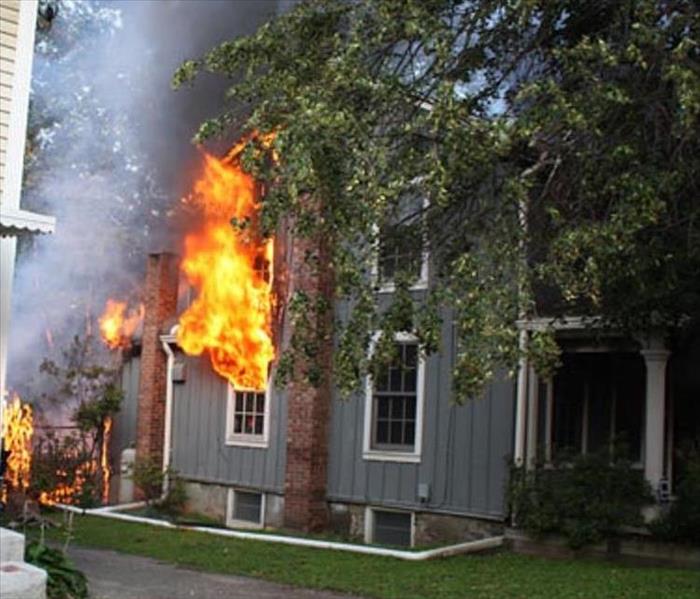 It's important to know what you can do and what not to do before help arrives.
It's important to know what you can do and what not to do before help arrives.
What to do until help arrives, after you've had a fire.
After any fire damage situation, your primary focus should be safety first:
- Is it safe to stay in the house?
- Electrical and "slip and fall" hazards are some of the most prevalent concerns.
- Only do activities that are safe for you to perform.
- Wet materials can be VERY heavy. Be careful!
Have Smoke or Fire Damage? Call 845-831-3600
What To Do After A Fire
- Limit movement in the home to prevent soot particles from being embedded into upholstery and carpets.
- Keep hands clean so as not to further soil upholstery, walls and woodwork.
- Place clean towels or old linens on rugs, upholstery and carpet traffic areas.
- If electricity is off, empty freezer and refrigerator and prop doors open.
- Clean and protect chrome with light coating of petroleum jelly or oil.
- Wash houseplants on both sides of leaves.
- Tape double layers of cheesecloth over air registers.
What NOT To Do After A Fire
- Don't attempt to wash any walls or painted surfaces or shampoo carpet or upholstery without contacting us.
- Don't attempt to clean any electrical appliances that may have been close to fire, heat or water without consulting an authorized repair service.
- Don't use any canned or packaged food or beverages that may have been stored near the fire, heat or water.
- Don't turn on ceiling fixtures if ceiling is wet. The wiring may be damaged.
- Don't send garments to an ordinary dry cleaner. Improper cleaning may set smoke odor.
SERVPRO of Western Dutchess is available 24/7 to provide emergency fire services, board-up services & reconstruction services to help make your damage "Like it never even happened."
Why you should consider a fire extinguisher in your Dutchess County home
10/30/2018 (Permalink)
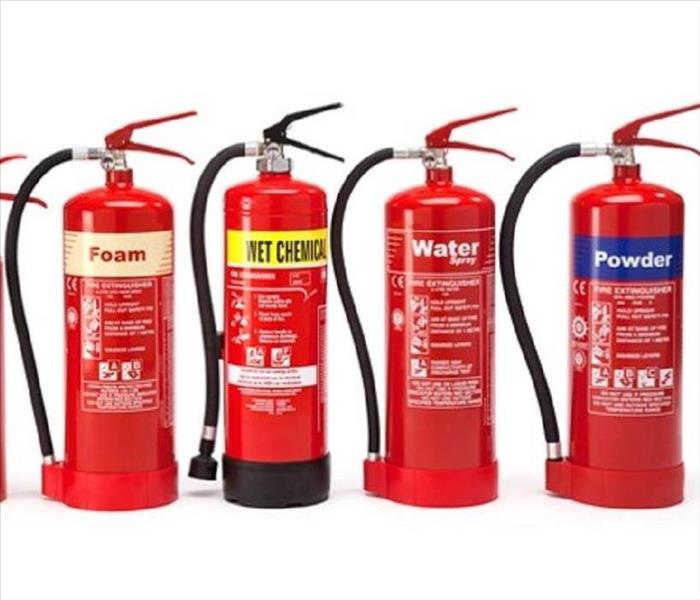 One fire extinguisher per floor is recommended!
One fire extinguisher per floor is recommended!
Fire extinguishers can save your life! They can put out a fire before emergency personnel arrive or they can help you exit your home safely.
What type do you get?
All household fire extinguishers have 3 classifications: A, B or C. Some models have a combination of all three extinguishers in one.
- "A" is for ordinary combustibles like trash, wood and paper
- "B" is for liquids & grease (more stove top fires)
- "C" is for electrical equipment
According to the National Fire Protection Association, each floor of your home should have an extinguisher.
How do you use a fire extinguisher?
To use the extinguisher properly, you want to use the PASS method:
- Pull the pin. Hold the nozzle pointing away from you and release the locking mechanism.
- Aim low. Point the extinguisher at the base of the fire instead of at the flames themselves. Standing at least 6 feet away from the fire is important!
- Squeeze the lever slowly and evenly while keeping the extinguisher upright.
- Sweep the nozzle from side-to-side until the extinguisher runs dry.
Read the instructions on the fire extinguisher and become familiar with them before a fire breaks out. Remember, extinguishers do have limitations so make sure you have the correct extinguisher for your home.
Whenever you use an extinguisher, whether you ran it dry or used it briefly, it's important to replace it or refill it right away. This is also the rule for any gauge that goes down to the red zone over time.
Even though you take precautions against fire damages, they can still sometimes occur. If you experience a fire damage in your home, don't hesitate to contact SERVPRO of Western Dutchess County at 845-831-3600 to help make this disaster "Like it never even happened."
Tips to help prevent fires in your Dutchess County home
10/29/2018 (Permalink)
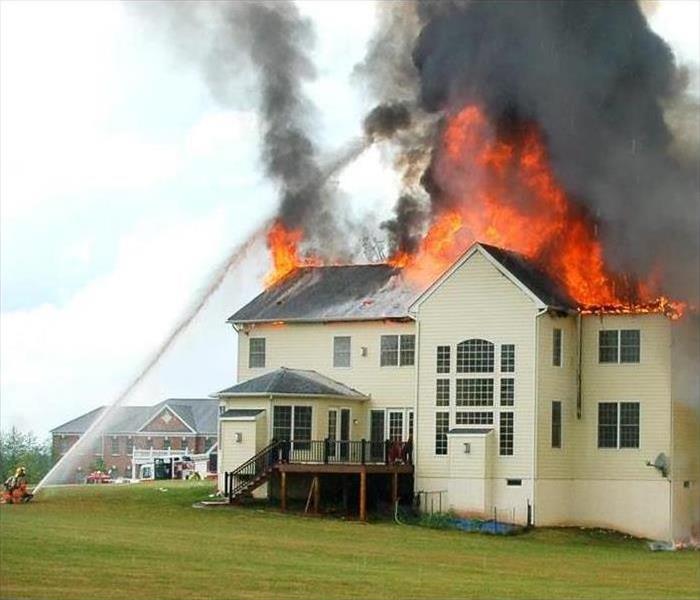 Tips to help avoid fires in your home.
Tips to help avoid fires in your home.
According to U.S. News, “Each year, roughly 3,400 people are killed in home fires or by burn injuries, making them the third-most-common cause of accidental deaths at home”. They have provided five tips that can help to prevent home fires.
Fire Threat: Cooking
-Stand by your pan! Don’t walk away while the stove or cook-top is on. This can lead to a fire very quickly.
Fire Threat: Heating
-A space heater needs 3 feet of clear space all around it in all directions, keeping it away from draperies, furniture, bedspreads, people, and pets .
-Chimneys should be inspected and cleaned before each heating season begins.
Fire Threat: Smoking
-Take it outside. There are usually less combustible items outside than there are inside.
Fire Threat: Electrical
-Check all of your electrical cords to ensure that they are in good shape, and replace any that are worn out. In addition, make sure you are not overloading circuits and that one receptacle has one plug.
Fire Threat: Candles
-Consider going to battery-operated candles. They are fake but they are so much safer! It’s easy to forget to put out a candle when leaving a room.
Reference: Mullins (U.S. News) Top 5 Tips to Prevent House Fires. http://money.usnews.com/money/personal-finance/real-estate/articles/2008/09/25/top-5-simple-ways-to-prevent-home-fires?page=2
Dutchess County Homeowners! How to Prevent Dryer Fires
10/23/2018 (Permalink)
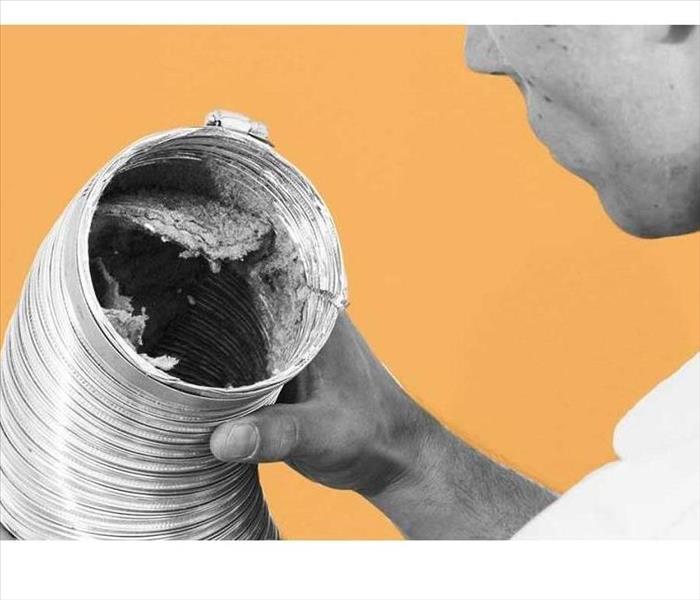 An accumulation of lint can lead to a dangerous situation.
An accumulation of lint can lead to a dangerous situation.
According to Consumer Reports (2018), every year firefighters across the country respond to around 14,630 home fires caused by clothes dryers, according to the National Fire Protection Association.
One-third of these fires is caused by an accumulation of lint, which means that not cleaning out your dryer vent can set you up for a dangerous situation that's far more serious than the drop in performance caused by constricting a dryer's duct work.
Take a look at these 4 simple best practices to ensure safety in the laundry room:
- CLEAN THE LINT FILTER AFTER EVERY LOAD- not only will this help prevent a fire, but your clothes will dry faster!
- REPLACE ACCORDION-STYLE DUCTS-If you see a plastic or foil accordion-style duct connecting your appliance to the vent, it’s a good idea to replace it with a rigid metal duct that won't sag and collect lint.
- CLEAN THE DRYER DUCT ANNUALLY- (at least)-Disconnect the duct from the dryer, and vacuum both the dryer and the duct—as much as you can access, then reassemble, return dryer to original spot and reconnect power.
- HANDLE CHEMICAL STAINS WITH CARE-Clothes stained with gas, cooking oil, cleaning agents, or other flammable chemicals or substances need special care. It's recommended to wash such stained clothing more than once to minimize volatile chemicals, then hang to dry. If you must use a dryer, use the lowest heat setting and a drying cycle that concludes with a cool-down period.
IMPORTANT: In the event that a fire does start, keep the dryer door closed to limit its oxygen supply—a fire needs oxygen to keep it going.
If your family has experienced a fire of any kind and needs help restoring your home, SERVPRO® of Western Dutchess County can help 24/7! Give us call at 845-831-3600 to learn about our fire restoration services. "Like it never even happened."
Reference: Consumer Reports- How to Prevent Dryer Fires: https://www.consumerreports.org/clothes-dryer/how-to-prevent-dryer-fires/
What You Can Do Safely Before Fire Restoration Help Arrives | SERVPRO® of Western Dutchess County
7/12/2018 (Permalink)
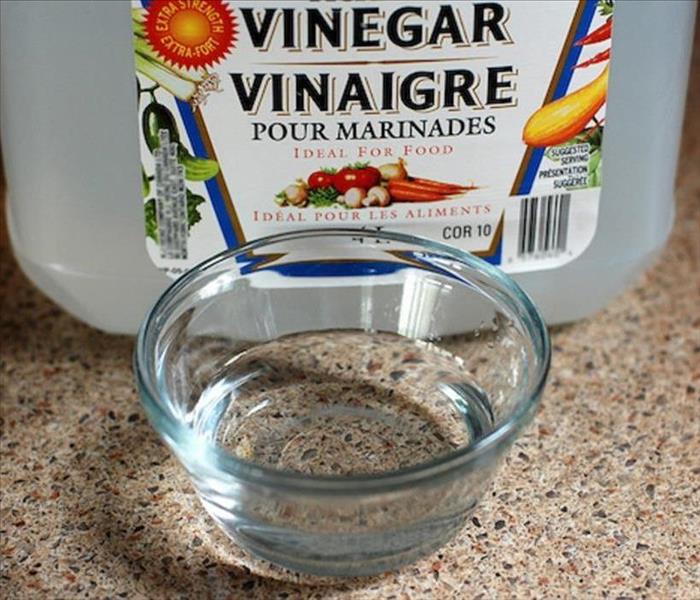 Call 845-831-3600 for help with our fire damage today!
Call 845-831-3600 for help with our fire damage today!
Learning that you’ve been affected by a home fire is a devastating feeling. The good news is, much of the damage can be mitigated through restoration if you hire a professional.
Not only will a professional work with your homeowner’s insurance company on your behalf, but they will also be able to salvage more items in the cleanup. However, it’s natural to want to do what you can to get started as you’re waiting for help to arrive.
While some things should always be left to the professionals, there are a few things you can do while you wait. If you’d like to start on fire restoration ASAP, here are three things you can safely do:
Starting laundry right away is a great way to help the cleanup process, as most things will have to be washed several times. As long as your machines have not been affected, washing any clothing, bedding or other machine washable materials with an alkaline cleaner or vinegar solution is a great place to start. Leave delicate fabrics, upholstery and curtains to professional care.
If weather allows, reduce the smoky smell by opening windows and doors, and let them remain open as long as possible. While the restoration team will bring industrial-grade equipment to aid this process once they arrive, this is a small step you can take toward helping the process along.
Non-porous surfaces—such as tile and countertops—can benefit from a scrub with soap and water to cut through the outermost layer of grime. A mild dish soap or alkaline cleaner will get you started, but let the professionals handle the usage of anything more heavy-duty. Cleaning improperly can result in more severe and possibly permanent damage to your surfaces, so anything you’re unsure about should be left to the pros.
In the event of a house fire, SERVPRO® has a team of trained professionals that can help your life get back to normal, faster.
3 Reasons to Not Make Soot Cleanup a DIY | SERVPRO® of Western Dutchess County
6/25/2018 (Permalink)
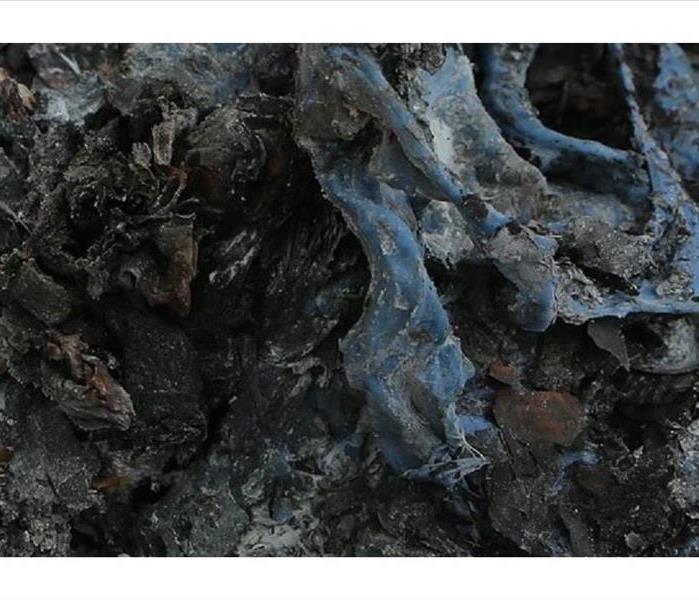 Call 845-831-3600 to help with your soot clean up today!
Call 845-831-3600 to help with your soot clean up today!
From revamping your patio to remodeling the kitchen, DIY home improvements are integral to many homeowners’ weekends. However, even the handiest of homeowners should know that not everything should be tackled on your own.
If your home has been subject to fire damage, it’s tempting to start the cleanup process right away—but because there are many nuances to soot removal, this hastiness can often hurt more than it helps. That’s why we’ve compiled three reasons soot cleanup should never be a DIY project:
1. There Are Different Types of Soot. Because every fire is different, soot can vary greatly in its composition. While some soot has a dry, powdery texture, others will be thick and liquid-like. Appearances can be deceiving, and many homeowners are surprised to find that they don’t know what type of soot they’re dealing with before they interact with it. Tackling soot without knowing what type is on your hands can lead to spreading it further, running the risk of causing more damage to the home.
2. Soot Contains Toxic Chemicals. Fires require things such as carbon dioxide, oxygen and nitrogen, but there are also chemicals released from every material that the flames came into contact with. Materials such as plastics, textiles and paint are extremely toxic once heated, and soot contains them all. Because of this, improper soot cleaning can cause these toxins to be re-released into the air and infiltrate the home with chemicals.
3. Soot Won’t Stay Put. Soot travels through the air, meaning it won’t remain contained to the fire’s original area. Soot travels into crevices, adheres to ceilings and can even infiltrate HVAC systems. Additionally, materials such as fabrics, upholstery and carpets can attract soot from other parts of the home. While it might be tempting to launder these items and scrub down the walls right away, improper cleaning can lead to ruining your belongings beyond repair.
If your home has been damaged by a fire, don’t risk causing further damage with DIY cleanup. SERVPRO® of Western Dutchess County has a team of fire restoration professionals that can get your life back to normal, faster.
3 Reasons to Not Make Soot Cleanup a DIY | SERVPRO® of Western Dutchess County
6/25/2018 (Permalink)
 Call 845-831-3600 to have SERVPRO help you with your soot cleaning!
Call 845-831-3600 to have SERVPRO help you with your soot cleaning!
From revamping your patio to remodeling the kitchen, DIY home improvements are integral to many homeowners’ weekends. However, even the handiest of homeowners should know that not everything should be tackled on your own.
If your home has been subject to fire damage, it’s tempting to start the cleanup process right away—but because there are many nuances to soot removal, this hastiness can often hurt more than it helps. That’s why we’ve compiled three reasons soot cleanup should never be a DIY project:
1. There Are Different Types of Soot. Because every fire is different, soot can vary greatly in its composition. While some soot has a dry, powdery texture, others will be thick and liquid-like. Appearances can be deceiving, and many homeowners are surprised to find that they don’t know what type of soot they’re dealing with before they interact with it. Tackling soot without knowing what type is on your hands can lead to spreading it further, running the risk of causing more damage to the home.
2. Soot Contains Toxic Chemicals. Fires require things such as carbon dioxide, oxygen and nitrogen, but there are also chemicals released from every material that the flames came into contact with. Materials such as plastics, textiles and paint are extremely toxic once heated, and soot contains them all. Because of this, improper soot cleaning can cause these toxins to be re-released into the air and infiltrate the home with chemicals.
3. Soot Won’t Stay Put. Soot travels through the air, meaning it won’t remain contained to the fire’s original area. Soot travels into crevices, adheres to ceilings and can even infiltrate HVAC systems. Additionally, materials such as fabrics, upholstery and carpets can attract soot from other parts of the home. While it might be tempting to launder these items and scrub down the walls right away, improper cleaning can lead to ruining your belongings beyond repair.
If your home has been damaged by a fire, don’t risk causing further damage with DIY cleanup. SERVPRO® of Western Dutchess County has a team of fire restoration professionals that can get your life back to normal, faster.
Reconstruction Services Now Being Offered!
5/2/2017 (Permalink)
 SERVPRO will take the nightmare of a damage and help to make it "Like it never even happened."
SERVPRO will take the nightmare of a damage and help to make it "Like it never even happened."
We are now a one-stop shop!
SERVPRO of Western Dutchess County is now offering reconstruction services for all mitigation damages! No longer do you need to find someone else to perform your restoration portion of the water, mold or fire damage! After we come in and perform the cleanup services, we can smoothly transition into the reconstruction services to help restore your home or office back to preloss condition!
With our new Reconstruction division, lead by Michael Scardaci, we are excited to offer the following services during the reconstruction process:
- Structural repairs
- Electrical
- Plumbing
- HVAC
- Windows/Doors
- Interior Design
- Flooring Replacement (all types)
- Ceilings
- Roofing
- Drywall
- Siding
- Exterior Finishes
- Carpentry
- Framing
- Tile Work
Call today for more information 845-831-3600 or visit our Facebook Page for more pictures and posts!
Fire Damage Tips!
3/21/2017 (Permalink)
 Let SERVPRO of Western Dutchess County help make your fire damage "Like it never even happened."
Let SERVPRO of Western Dutchess County help make your fire damage "Like it never even happened."
What to do until help arrives, after you've had a fire.
After any fire damage situation, your primary focus should be safety first:
- Is it safe to stay in the house?
- Electrical and "slip and fall" hazards are some of the most prevalent concerns.
- Only do activities that are safe for you to perform.
- Wet materials can be VERY heavy. Be careful!
Have Smoke or Fire Damage? Call 845-831-3600
What To Do After A Fire
- Limit movement in the home to prevent soot particles from being embedded into upholstery and carpets.
- Keep hands clean so as not to further soil upholstery, walls and woodwork.
- Place clean towels or old linens on rugs, upholstery and carpet traffic areas.
- If electricity is off, empty freezer and refrigerator and prop doors open.
- Clean and protect chrome with light coating of petroleum jelly or oil.
- Wash houseplants on both sides of leaves.
- Change HVAC filter.
- Tape double layers of cheesecloth over air registers.
What NOT To Do After A Fire
- Don't attempt to wash any walls or painted surfaces or shampoo carpet or upholstery without contacting us.
- Don't attempt to clean any electrical appliances that may have been close to fire, heat or water without consulting an authorized repair service.
- Don't use any canned or packaged food or beverages that may have been stored near the fire, heat or water.
- Don't turn on ceiling fixtures if ceiling is wet. The wiring may be damaged.
- Don't send garments to an ordinary dry cleaner. Improper cleaning may set smoke odor.
We're available 24/7 to provide emergency fire services, board-up services & reconstruction services to help make your damage "Like it never even happened."
How to Properly Use Your Fire Extinguisher
3/6/2017 (Permalink)
 Fire extinguishers save lives!
Fire extinguishers save lives!
Why you should consider a fire extinguisher for your Dutchess County home.
Fire extinguishers can save your life! They can put out a fire before emergency personnel arrive or they can help you exit your home safely.
What type do you get?
All household fire extinguishers have 3 classifications: A, B or C. Some models have a combination of all three extinguishers in one.
- "A" is for ordinary combustibles like trash, wood and paper
- "B" is for liquids & grease (more stove top fires)
- "C" is for electrical equipment
According to the National Fire Protection Association, each floor of your home should have an extinguisher.
How do you use a fire extinguisher?
To use the extinguisher properly, you want to use the PASS method:
- Pull the pin. Hold the nozzle pointing away from you and release the locking mechanism.
- Aim low. Point the extinguisher at the base of the fire instead of at the flames themselves. Standing at least 6 feet away from the fire is important!
- Squeeze the lever slowly and evenly while keeping the extinguisher upright.
- Sweep the nozzle from side-to-side until the extinguisher runs dry.
Read the instructions on the fire extinguisher and become familiar with them before a fire breaks out. Remember, extinguishers do have limitations so make sure you have the correct extinguisher for your home.
Whenever you use an extinguisher, whether you ran it dry or used it briefly, it's important to replace it or refill it right away. This is also the rule for any gauge that goes down to the red zone over time.
Even though you take precautions against fire damages, they can still sometimes occur. If you experience a fire damage in your home, don't hesitate to contact SERVPRO of Western Dutchess County at 845-831-3600 to help make this disaster "Like it never even happened."
Summer BBQ Fire Safety Tips for Dutchess & Ulster County Residents
6/14/2016 (Permalink)
 SERVPRO of Western Dutchess County & Kingston/New Paltz wants you to enjoy your summer safely!
SERVPRO of Western Dutchess County & Kingston/New Paltz wants you to enjoy your summer safely!
'Tis the grilling and fire pit season! Keeping the stove off and lighting that grill or smoker is a summer dream. While we all look forward to that warm weather, it is very important to keep these fire safety tips in mind!
Grilling:
Keep a 3 foot clearance on all sides of the grill (that means keep kids and pets clear too!)Do not use the grill near the house, siding, railings, or any overhangsDo not use under trees or shrubbery.Periodically clean the grill and its grease traps to prevent grease fires.If using coals, please make sure they are completely cool before disposing of in a metal container.Fire pits:
Before starting the fire, make sure the lid can fit and cover the inside fire in case of emergencyKeep the fire pit well away from flammable materials and fluidsDo not burn trash, leaves, paper or cardboard that could spark or send hot particles through the air.Other safety reminders:
Do not leave grills or fire pits unattendedAlways keep a fire extinguisher on handAlways stay safe with any summer activities. Enjoy the season!
Dutchess County Fire & Soot Cleanup
6/14/2016 (Permalink)
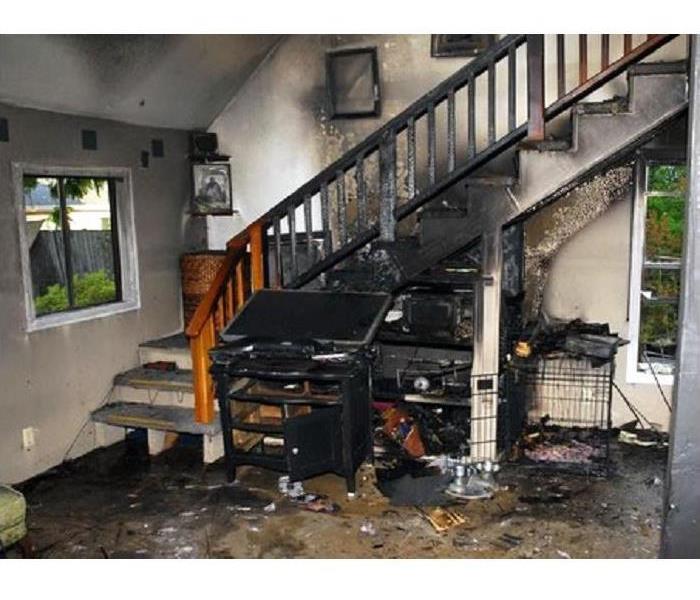 Fire Damage can cause serious damage in your home. What type of soot do you have?
Fire Damage can cause serious damage in your home. What type of soot do you have?
Smoke and soot is very invasive and can penetrate various cavities within your home, causing hidden damage and odor. Our smoke damage expertise and experience allows us to inspect and accurately assess the extent of the damage to develop a comprehensive plan of action.
Smoke and soot facts:
- Hot smoke migrates to cooler areas and upper levels of a structure.
- Smoke flows around plumbing systems, seeping through the holes used by pipes to go from floor to floor.
- The type of smoke may greatly affect the restoration process.
Different Types of Smoke
There are two different types of smoke–wet and dry. As a result, there are different types of soot residue after a fire. Before restoration begins, SERVPRO of Western Dutchess County will test the soot to determine which type of smoke damage occurred. The cleaning procedures will then be based on the information identified during pretesting. Here is some additional information:
Wet Smoke – Plastic and Rubber
- Low heat, smoldering, pungent odor, sticky, smeary. Smoke webs are more difficult to clean.
Dry Smoke – Paper and Wood
- Fast burning, high temperatures, heat rises therefore smoke rises.
Protein Fire Residue – Produced by evaporation of material rather than from a fire
- Virtually invisible, discolors paints and varnishes, extreme pungent odor.
Our Fire Damage Restoration Services
Since each smoke and fire damage situation is a little different, each one requires a unique solution tailored for the specific conditions. We have the equipment, expertise, and experience to restore your fire and smoke damage. We will also treat your family with empathy and respect and your property with care.
Have Questions about Fire, Smoke, or Soot Damage?
Call Us Today – 845-831-3600
Tips to Prevent Home Fires
1/28/2016 (Permalink)
 Use these tips to help prevent house fires
Use these tips to help prevent house fires
According to U.S. News, “Each year, roughly 3,400 people are killed in home fires or by burn injuries, making them the third-most-common cause of accidental deaths at home”. They have provided five tips that can help to prevent home fires.
Fire Threat: Cooking
· Stand by your pan! Don’t walk away while the stove or cooktop is on. This can lead to a fire very quickly.
Fire Threat: Heating
· A space heater needs 3 feet of clear space all around it in all directions, keeping it away from draperies, furniture, bedspreads, people, and pets .
· Chimneys should be inspected and cleaned before each heating season begins.
Fire Threat: Smoking
· Take it outside. There are usually less combustible items outside than there are inside.
Fire Threat: Electrical
· Check all of your electrical cords to ensure that they are in good shape, and replace any that are worn out. In addition, make sure you are not overloading circuits and that one receptacle has one plug.
Fire Threat: Candles
· Consider going to battery-operated candles. They are fake but they are so much safer! It’s easy to forget to put out a candle when leaving a room.
Reference: Mullins (U.S. News) Top 5 Tips to Prevent House Fires. http://money.usnews.com/money/personal-finance/real-estate/articles/2008/09/25/top-5-simple-ways-to-prevent-home-fires?page=2
 If you are dealing with smoke or fire damage, call SERVPRO of Western Dutchess for efficient, effective and complete fire damage services.
If you are dealing with smoke or fire damage, call SERVPRO of Western Dutchess for efficient, effective and complete fire damage services.





 24/7 Emergency Service
24/7 Emergency Service














































